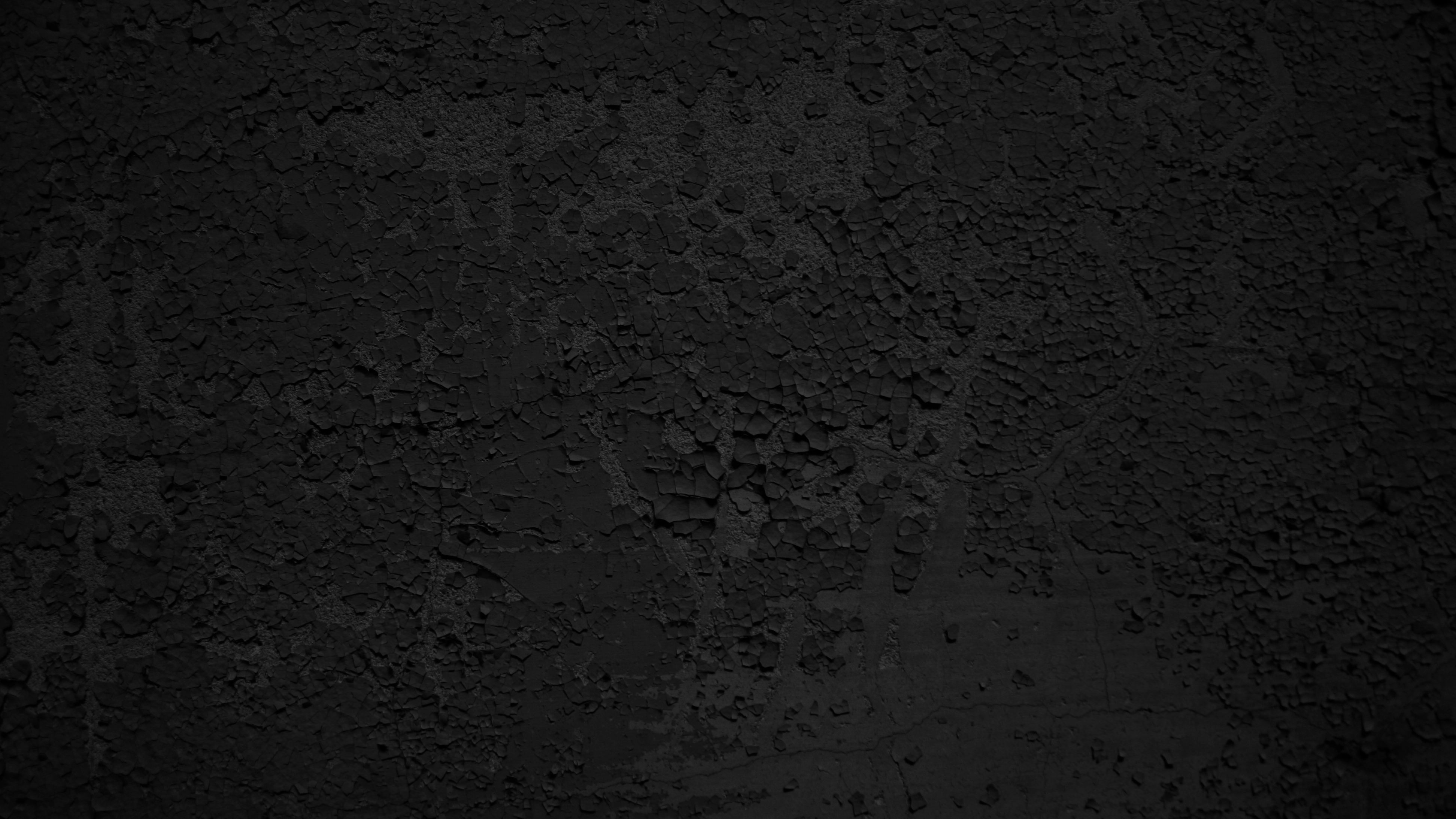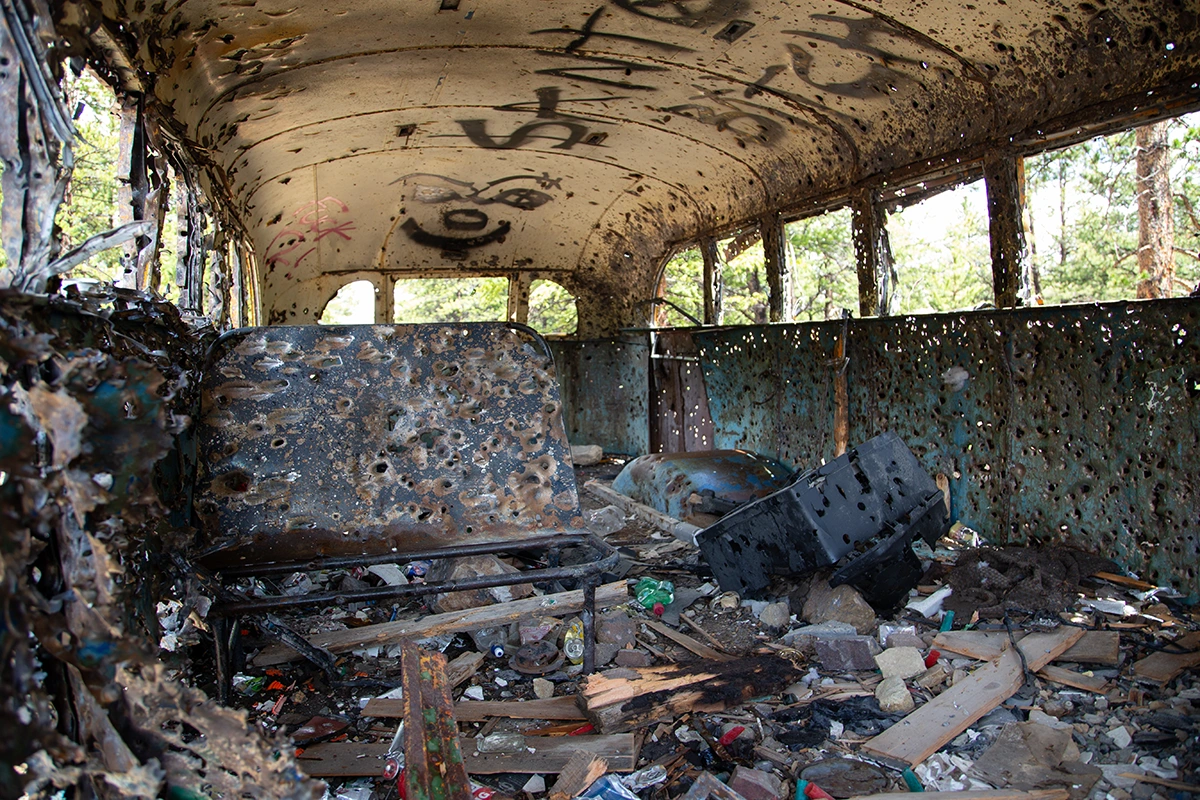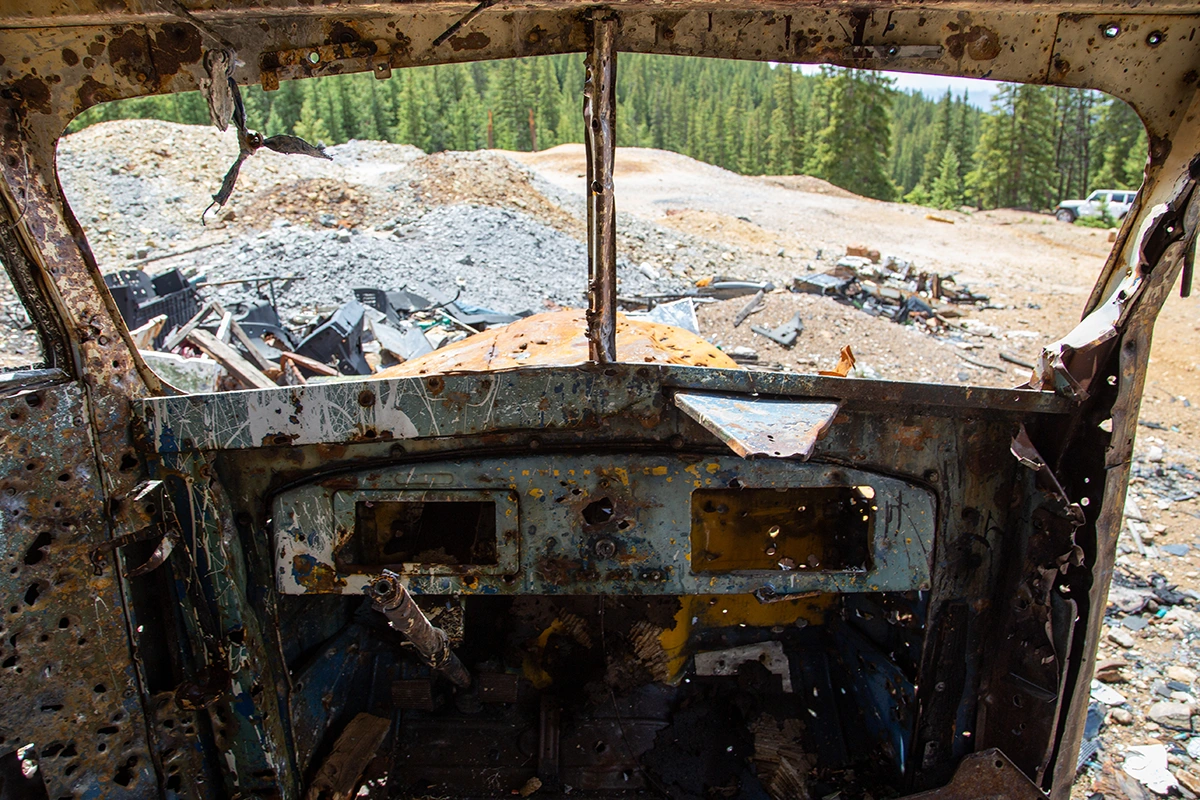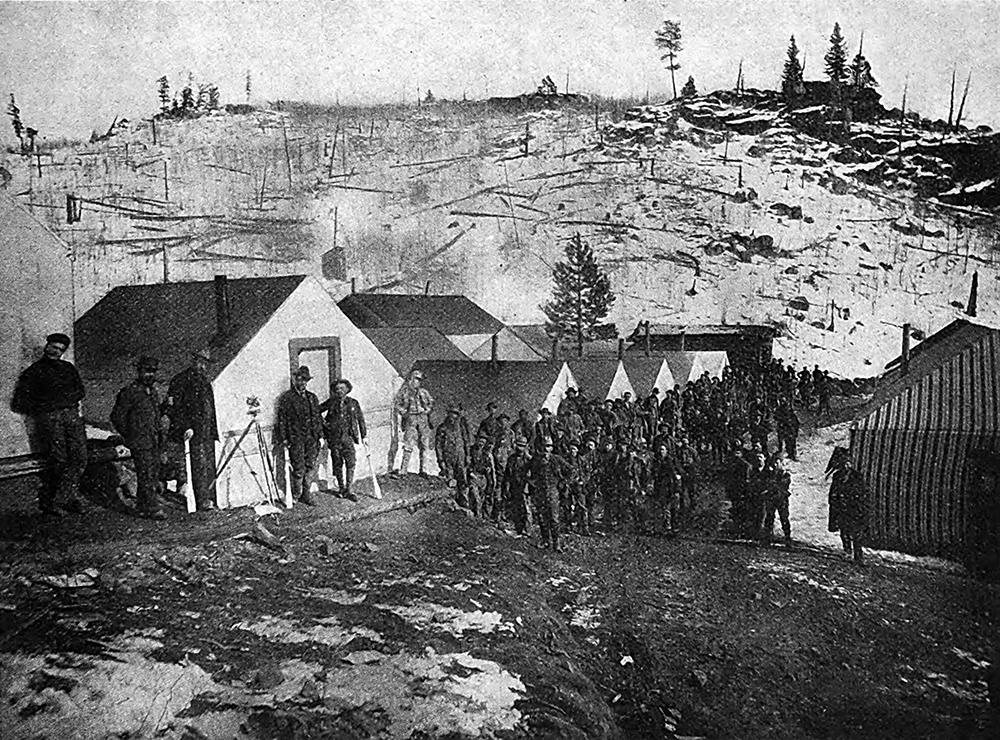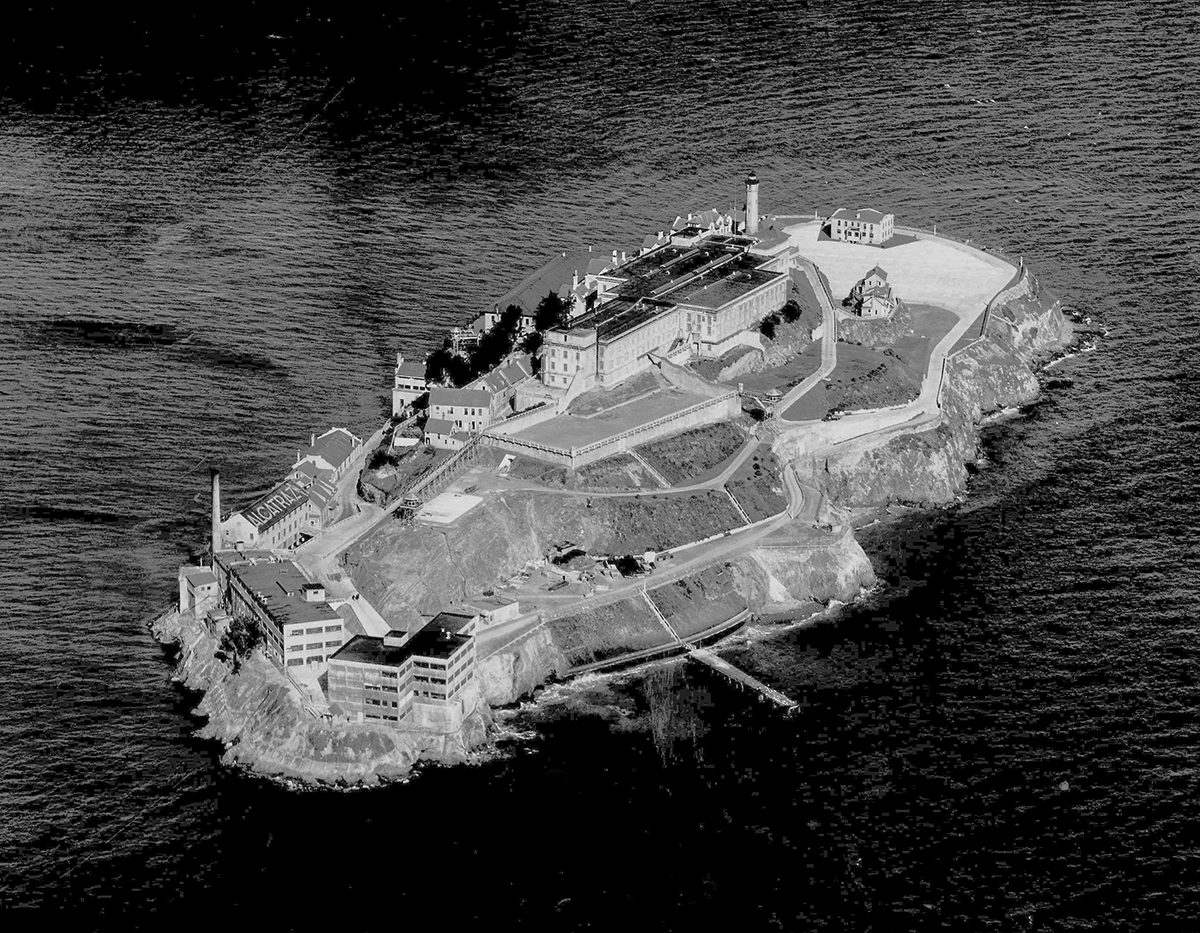Sunday, July 31, 2022
--Check out my video from this trip here.--
Leadville is a mountain town in central Colorado which was inhabited as early as the 16th century by the Ute Nation people. To the north of the Gunnison River the Ute Nation was mostly comprised of the Parianuche or "elk people". During the warm season, the Parianuche lived along the headwaters of the renowned Arkansas River in the area that later came to be known as Leadville. After spending the warm season along the headwaters, they moved to lower elevations in the winter. This was more or less the routine for some 300+ years before their home was invaded by people desperate to strike it rich by blasting tunnels and digging holes through the earth.
On April 26, 1860, placer gold was discovered in California Gulch one mile east of present-day town. By the end of the year, 10,000 people were living here and $2M in gold had been extracted. The good times didn't last long, however, when in 6 short years, the gold ran out and with it followed most of the town's inhabitants. It was around this time (1868) that the last of the indigenous Ute people were pushed out of the headwaters area for good as their new neighbors schemed up new "treaties" by which to take more of their land in hopes of striking it rich.
Leadville was practically a ghost town by the 1870's when some of the remaining prospectors discovered that the material which had been clogging their sluice boxes all this time actually contained about 15 ounces of silver per ton. These prospectors tried to keep the discovery a secret but that didn't last long and a decade later, Leadville had grown to become the second largest city in Colorado. It wasn't until ~1878 that Leadville even had an official name and by 1880, the town had "gas lighting, water mains, 28 miles of streets, 5 churches, 3 hospitals, six banks and a large school". Mail was carried from the post office here to Denver and the round trip took about one week. Leadville had several newspapers by the end of the 1870's and The Chronicle newspaper was the first in America to employ a full-time female reporter. William Nye, not the science guy, opened the first saloon in 1877, followed shortly by many others. A sign reportedly hung in one of the saloons which read "Please don't shoot the pianist, he is doing his best."
In 1879, Interlaken Hotel and Resort was constructed on the edge of Twin Lakes just outside of town. Originally called Lakeside Resort, James V. Dexter bought the property and expanded it to create one of the finest such establishments in the country. The resort included a pool hall, Dexter's cabin, a 16-horse stable, dance pavillion and a state-of-the-art octagonal outhouse. The prosperity didn't last long, however, and after a few modifications which were made in subsequent years to the lake and dam, the road to Interlaken was submerged and the only way to access the resort was now by boating across the lake or taking a ~5 mile trail. The site was eventually abandoned until the 1970's when the buildings were stabilized and preserved. Today you can visit the site and even go inside the amazing Dexter's Cabin. When I had the fortune to visit Interlaken, we took a kayak across the lake and it was a surprisingly rough trip battling waves and cold wind.
As with the previous post, this trip occured a little over a week after having surgery to put my collarbone back together so I had no business doing half of this stuff, but I'm, professionally speaking, "a dumbass". This situation meant my arm was useless and strapped across my body in a sling so I was working the camera while stumbling around left-handed and one-armed*, **. *Further difficulties on this part of the trip include the fact that I had been couch-ridden at sea level for the prior 3 weeks with a serious injury then suddenly hobbling up and down mountains at over 10,000 feet in elevation. This is the kind of experience that will make even the least introspective among us question our recent decisions. **To make things worse, it was storming pretty hard most of the time I was out here which resulted in some of the roads being flooded and the wet and uneven lanscape was not the easiest thing to hike across. In trying to get around some of the water by vehicle, I discovered that many of the roads out here aren't roads so much as they are creek beds or rock garden boulder scrambles. Google maps sent me down some routes that I wasn't sure I'd make it through with an intact vehicle. I spent at least 50% of my time out here bouncing and slamming around on the rocks in a rented vehicle driving through routes that aren't actually roads except in google maps' active imagination. County Road 1a, for example is a goddamn creek bed. But if you drive along this particular creek bed, as I was able to confirm, you do end up on top of a large pile of rocks with a commanding view of the area and I'll give google credit: that's where I was navigating us to. But there was a much easier route on an actually paved road I could have taken instead and which is the route I originally chose. But I made it back without re-breaking any bones or flipping the rented Jeep off a mountain, so that's what's important. Colorado has shown to me once again that while it is truly awesome it remains surprisingly exhausting and treacherous to explore.

Disclaimer: I had the opportunity to visit this site recently so I didn't pass it up despite the fact that I recently broke my collarbone and was only about a week and a half post-surgery with my right arm in a sling and completely useless. So this is the work of a one-armed crippled idiot.
Leadville Colorado Unnamed Mine #1
The first mine here is about 100 years newer than the rest of its neighbors but its relative youth was no advantage as it shut down after less than 10 years in operation.
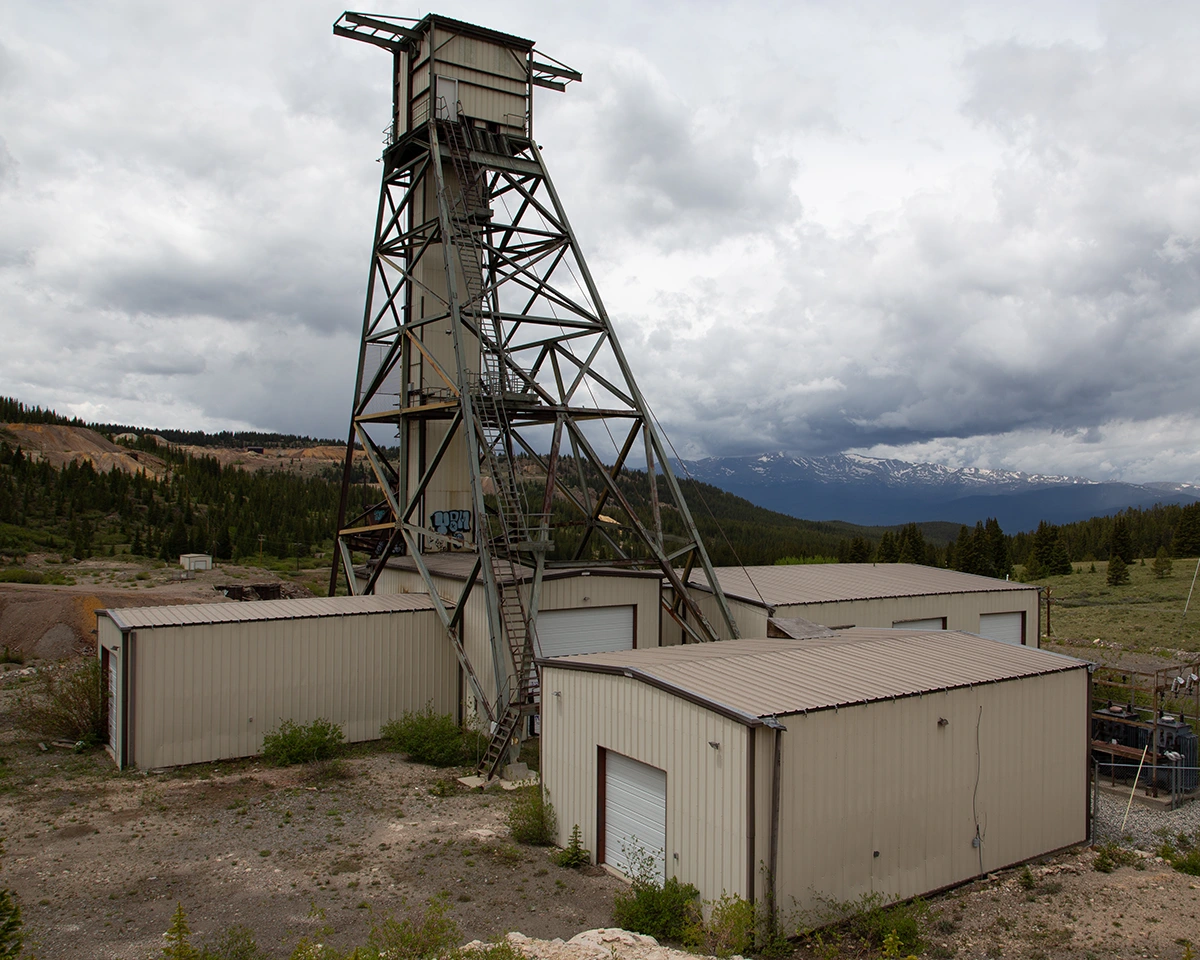
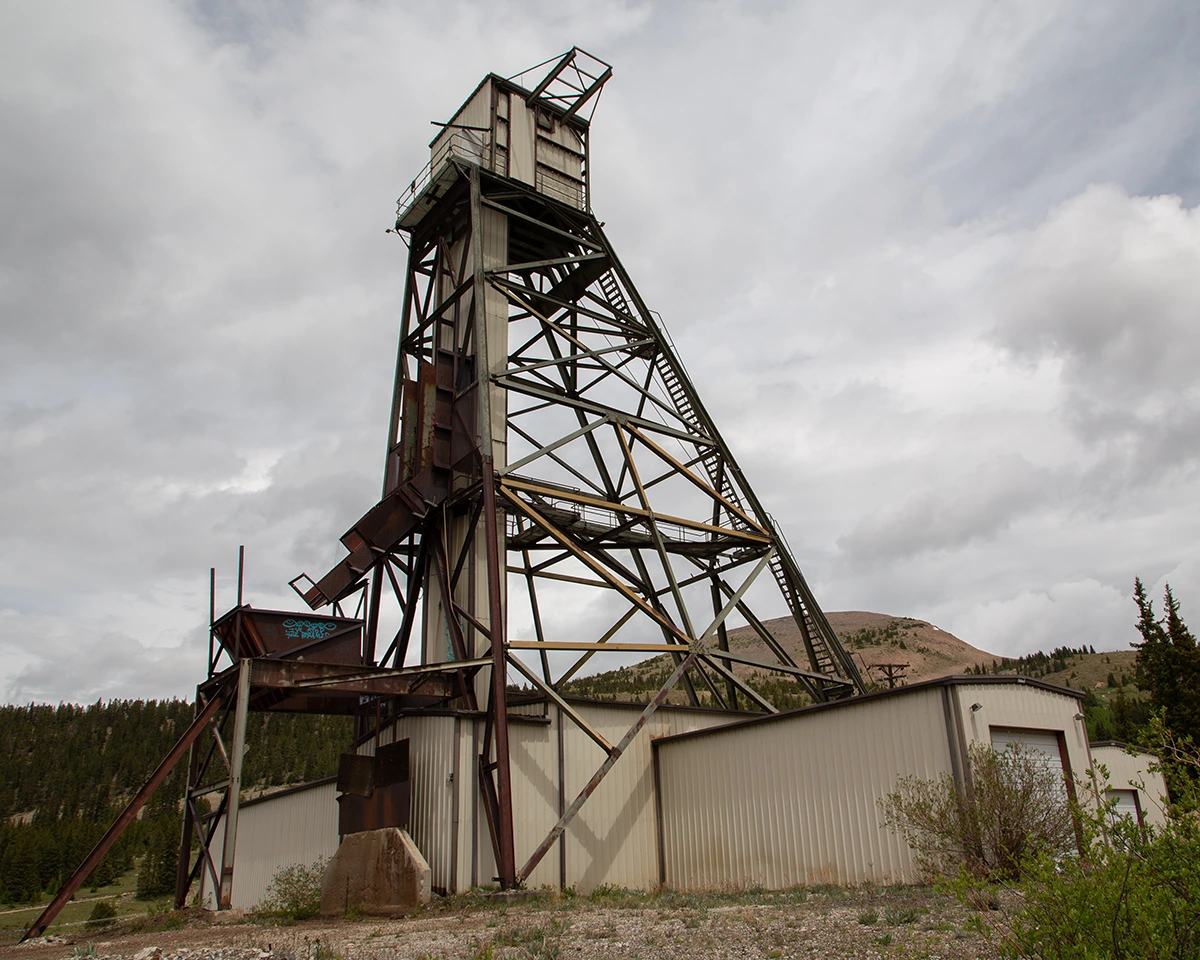
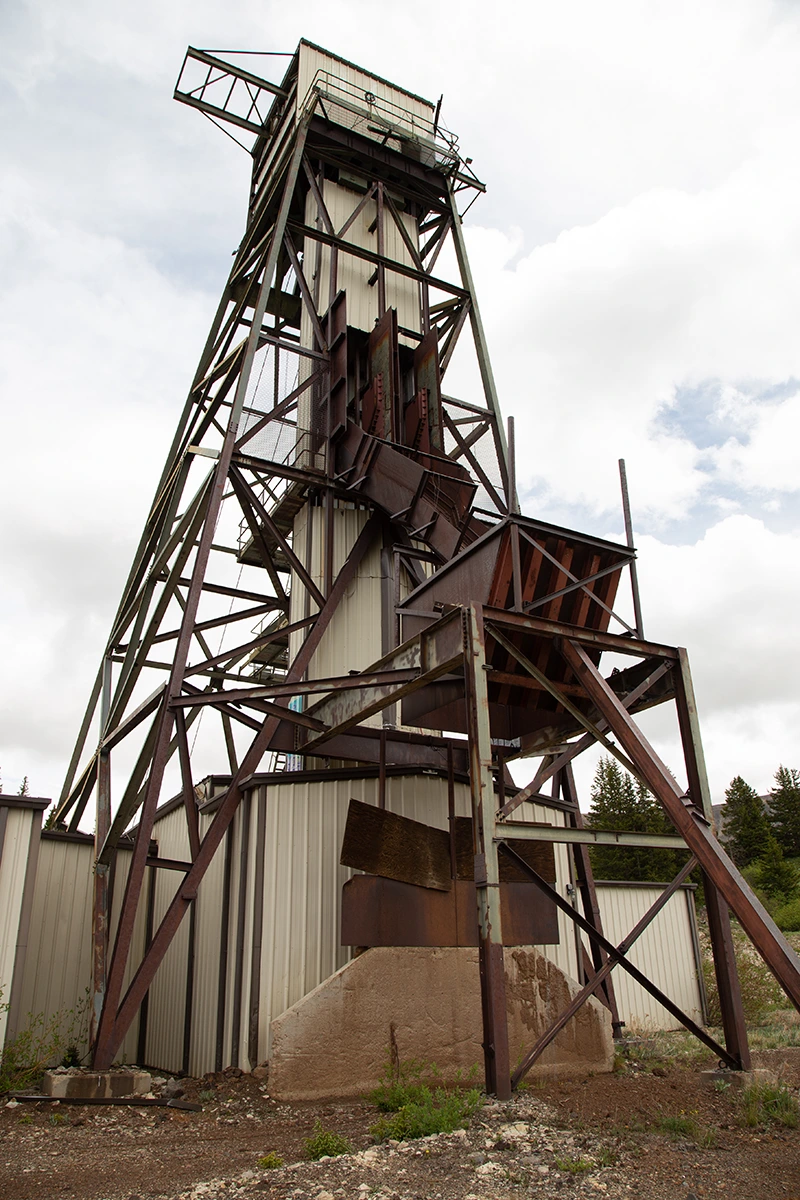
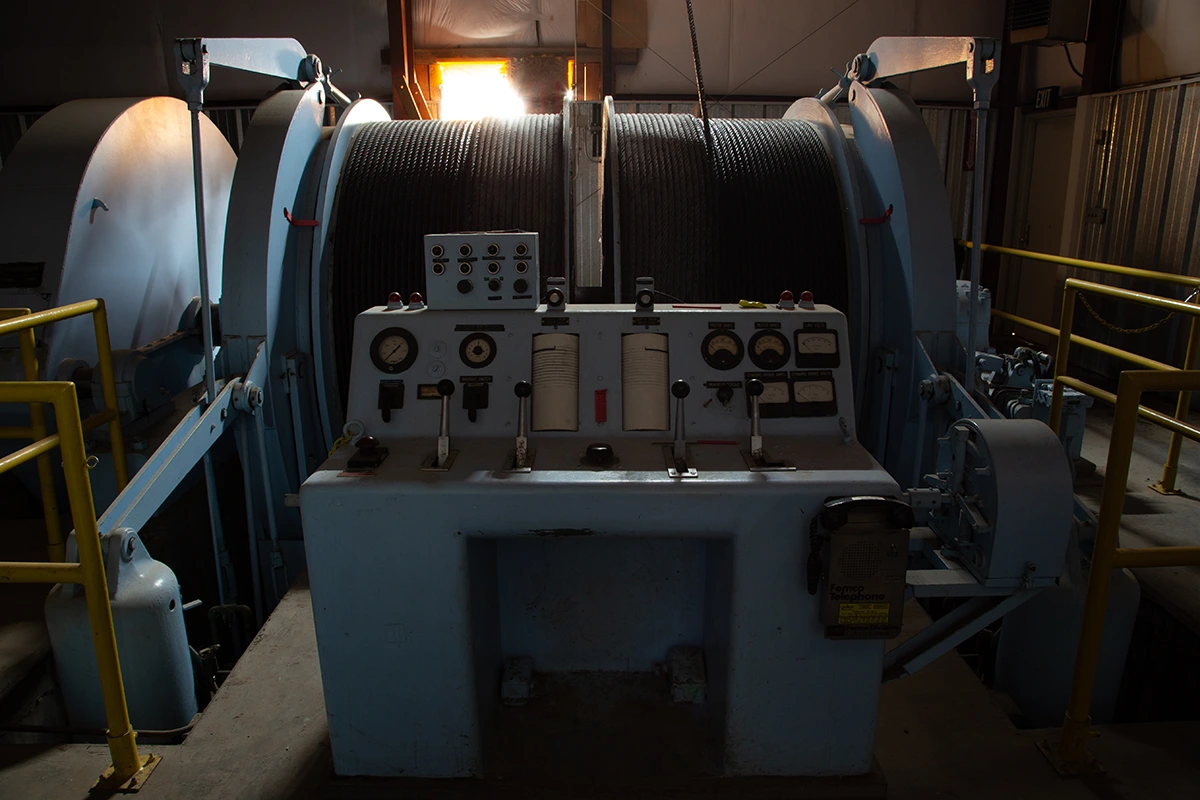
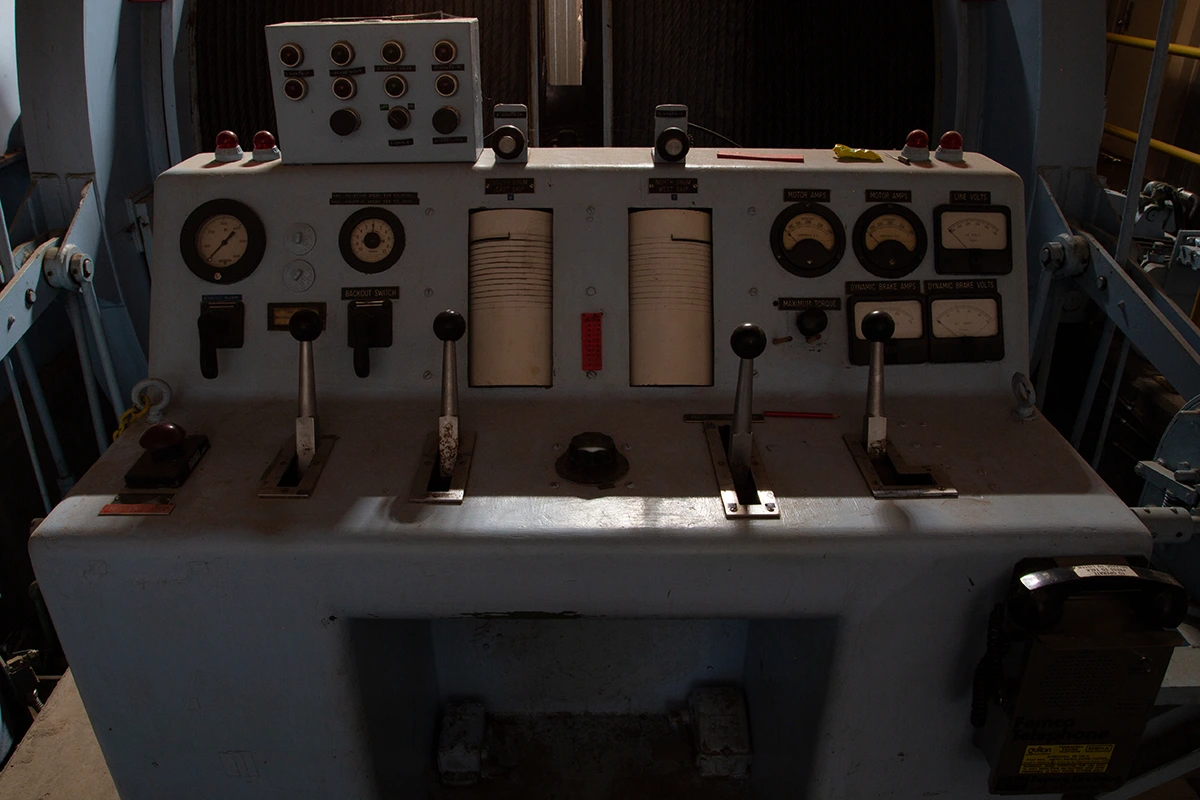
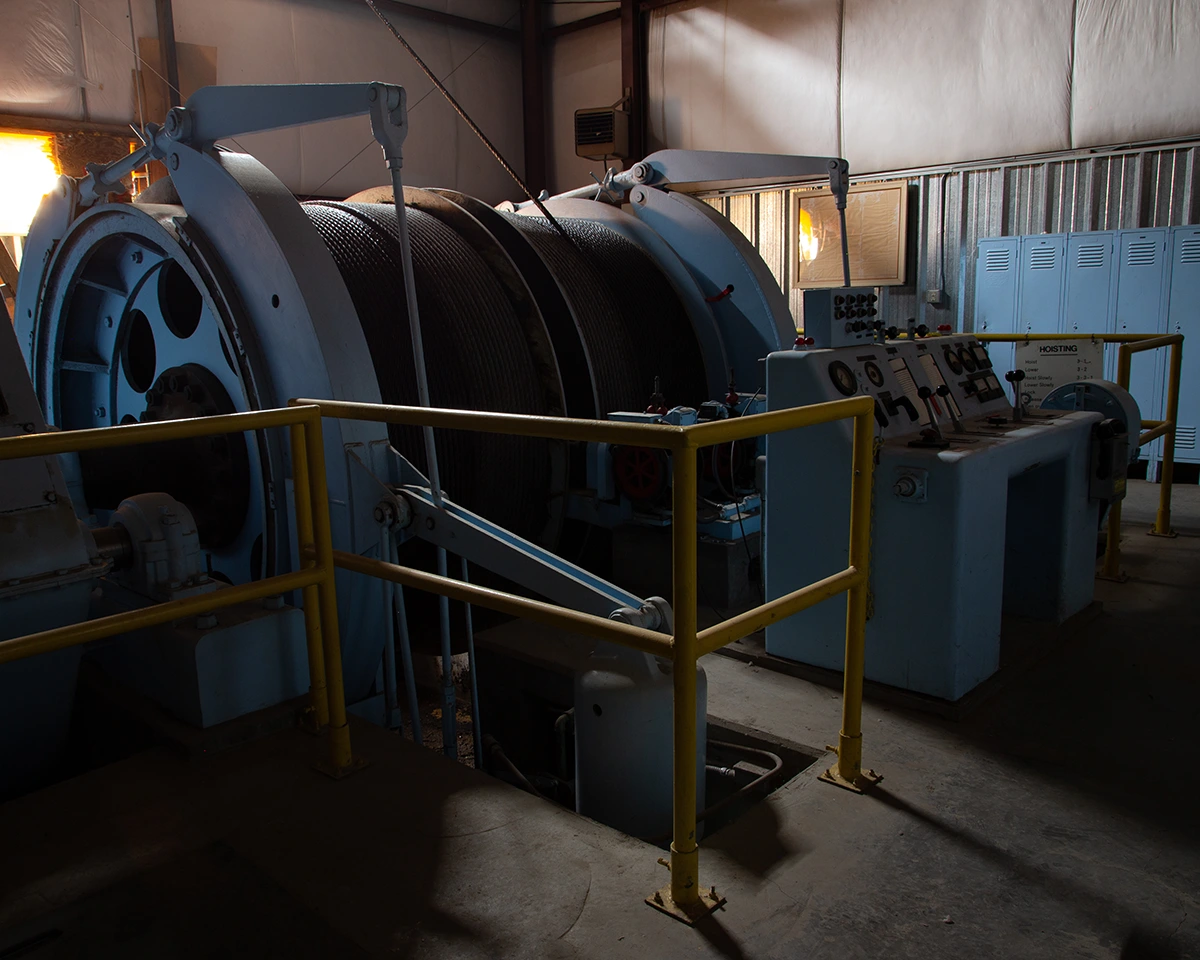
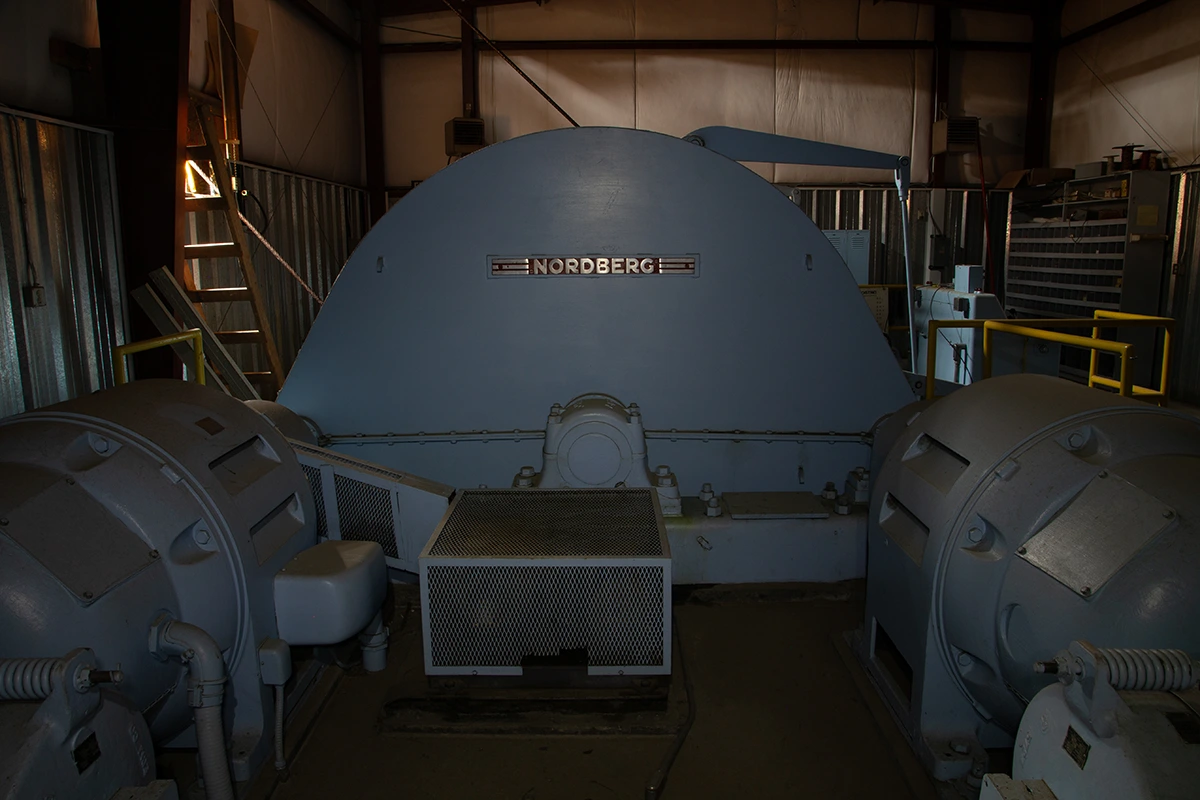
Saint Louis Mine - Leadville Colorado
While exploring the Leadville mining district just east of downtown Leadville, I encountered a Leyner pump sitting among the ruins just outside of the St. Louis Tunnel. The Saint Louis mine located here was involved in an interesting claim dispute with the overlapping Miner Boy mine and before it was over, the surface structures of both mines had been thoroughly burned to the ground. Leyner, the name on the pump sitting outside the mine, was a name practically synonymous with early mining history; It was said of J. George Leyner that "no man has done as much in the past generation to advance the art of removing rock." Among many other notable works, Leyner designed the "water-flushed drill". The new Leyner drill revolutionized mining and saved countless lives at a time when tens of thousands of miners died annually from the effects of Silicosis which was a terrible disease caused by excessive inhallation of rock dust. Shortly after the Leyner drill was introduced, many states banned the former method of "dry" mining. Another interesting St. Louis connection here is that the J. George Leyner Engineering Works won the grand prize at the 1904 World's Fair in Saint Louis and this was a catalyst which helped propel the company forward tremendously, at which time they began a series of expansions. In 1912, Leyner sold various distribution and patent rights on his rock drills and compressors to Ingersol-Rand Company, with whom his own company would go on to have a long partnership. Leyner eventually turned his attention to the agricultural industry where he saw room for improvement. He thus created the most excellent and awesomely named "Linapede" tractor, whose name was a result of the fact that it drove on tracks rather than wheels. One feature which made it particularly unique is the fact that the front and rear track's axles could both be rotated to allow the vehicle to make sharp turns-so sharp, in fact, that it could turn in a circle whose radius is less than the length of the tractor. I'm not sure how popular these tractors were, however, and I am unable to locate any examples of these machines which still exist. Having learned the history of Leyner, I personally found it very fucking cool to have located what appears to be an extant, original, Leyner water-flushed drill compressor house with a boiler and other related debris sitting outside one of the mines that it helped carve out over a century ago.
The Saint Louis Mine below, featuring the Leyner pump house and the St. Louis Tunnel (now collapsed).
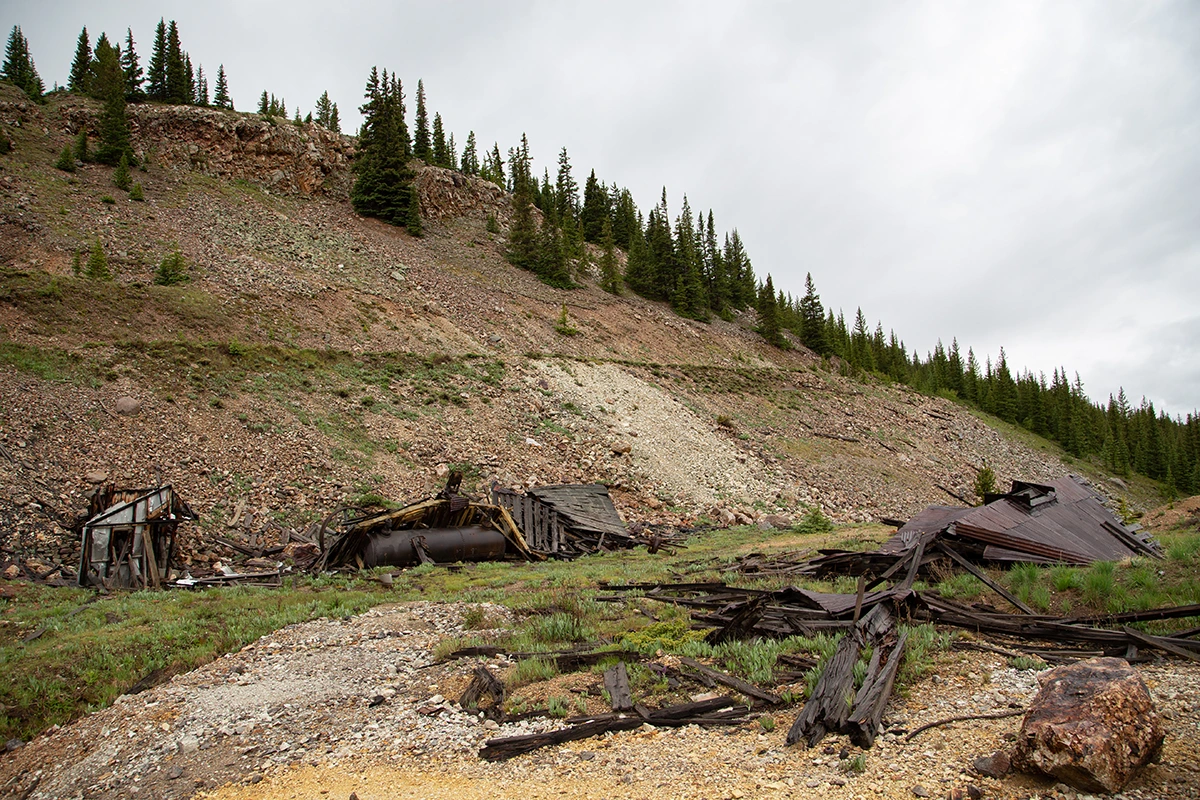
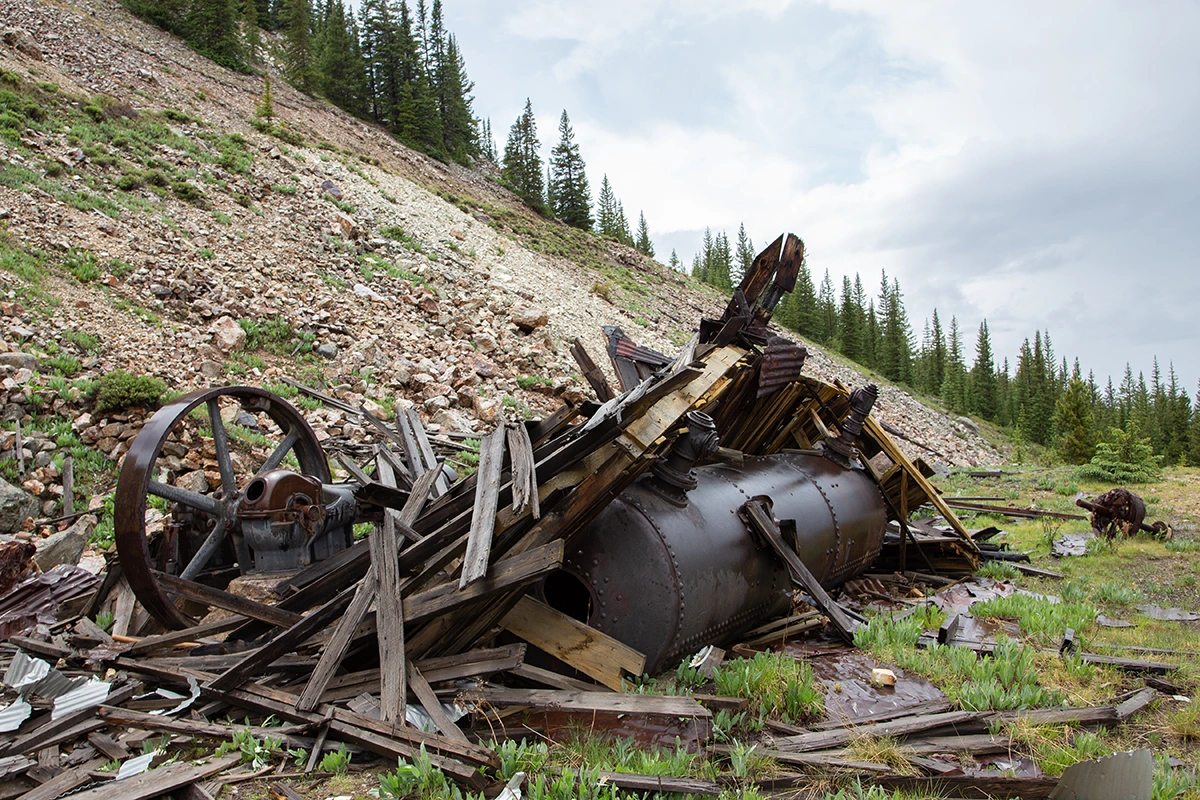
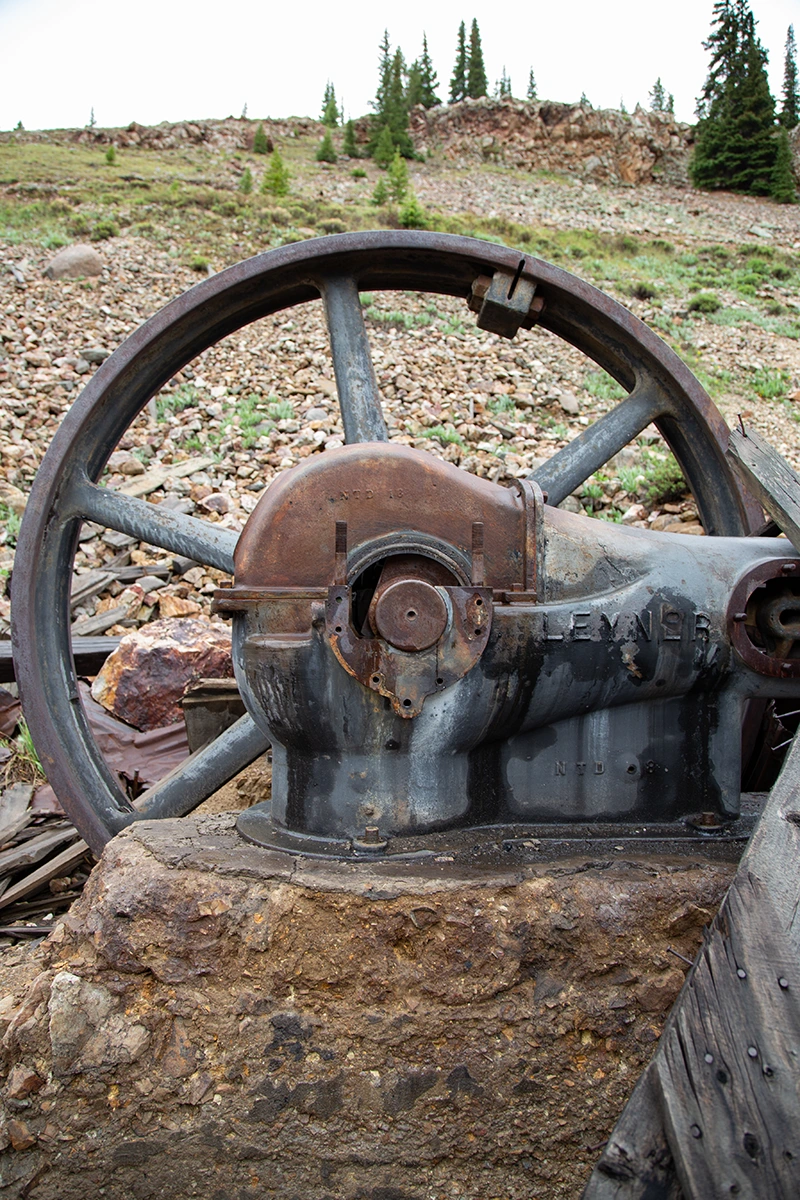
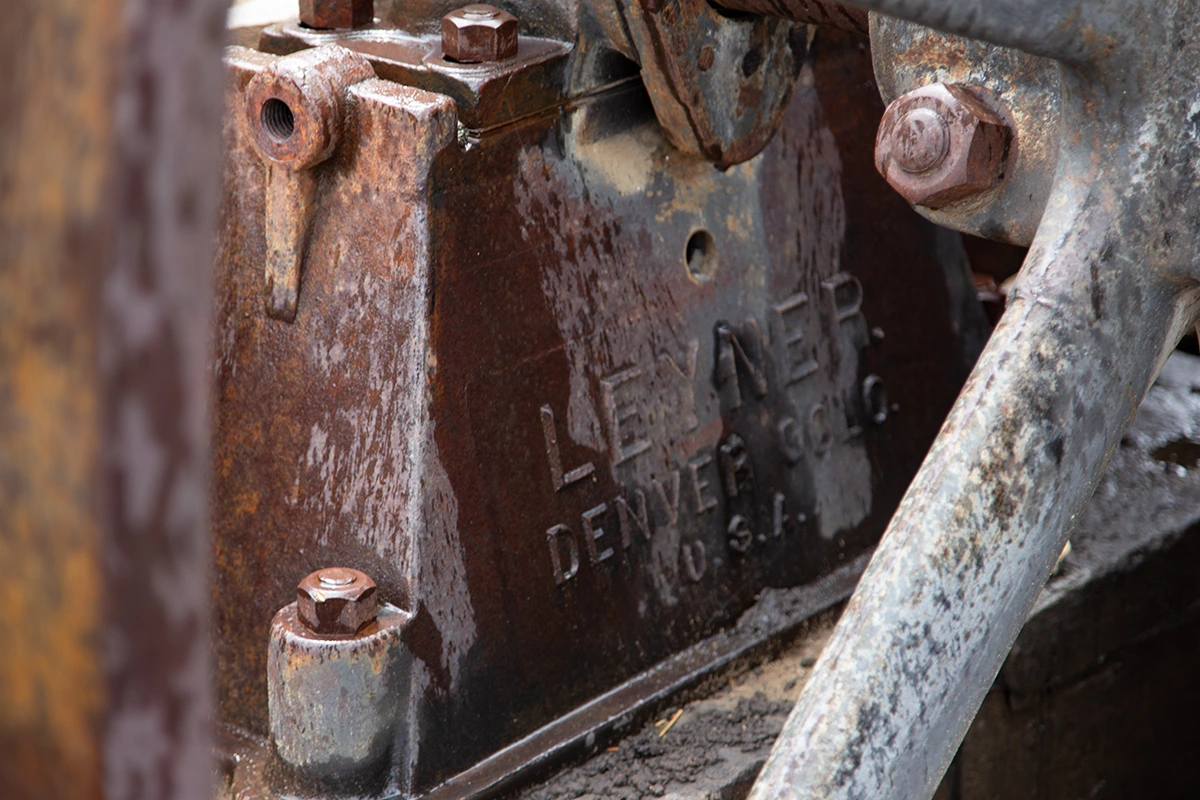
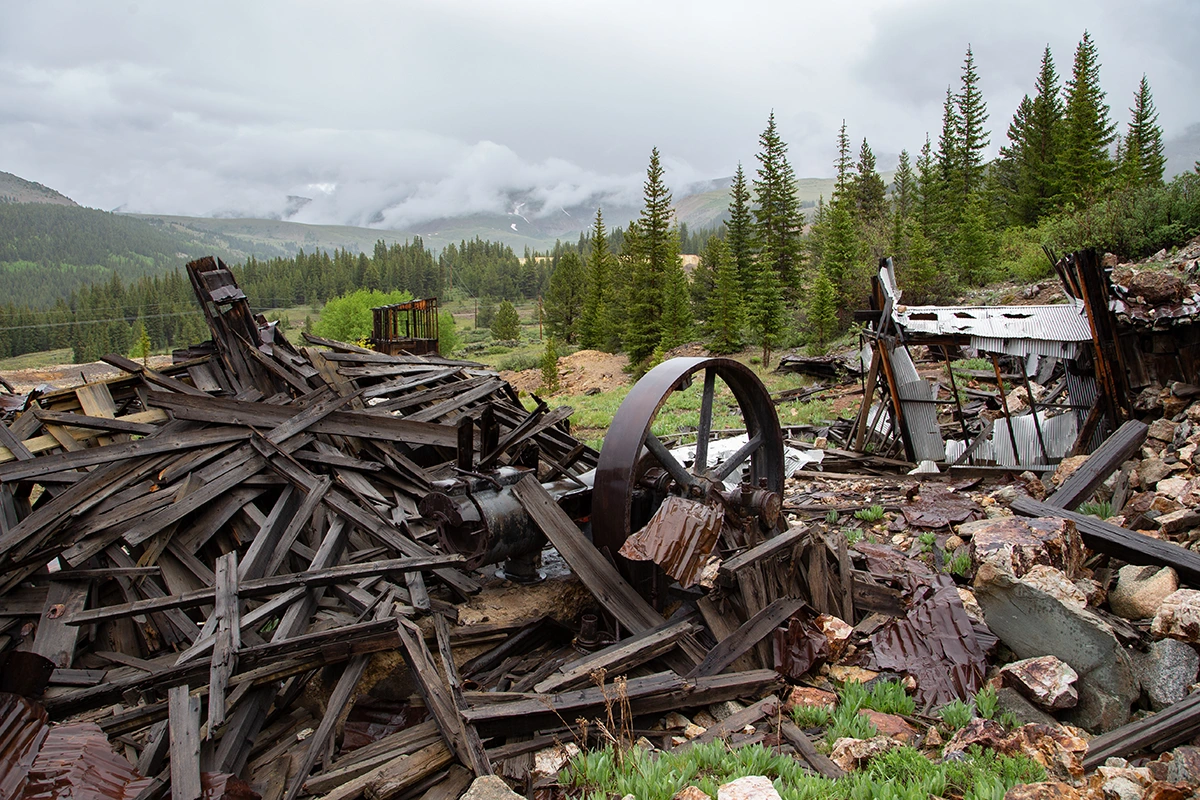
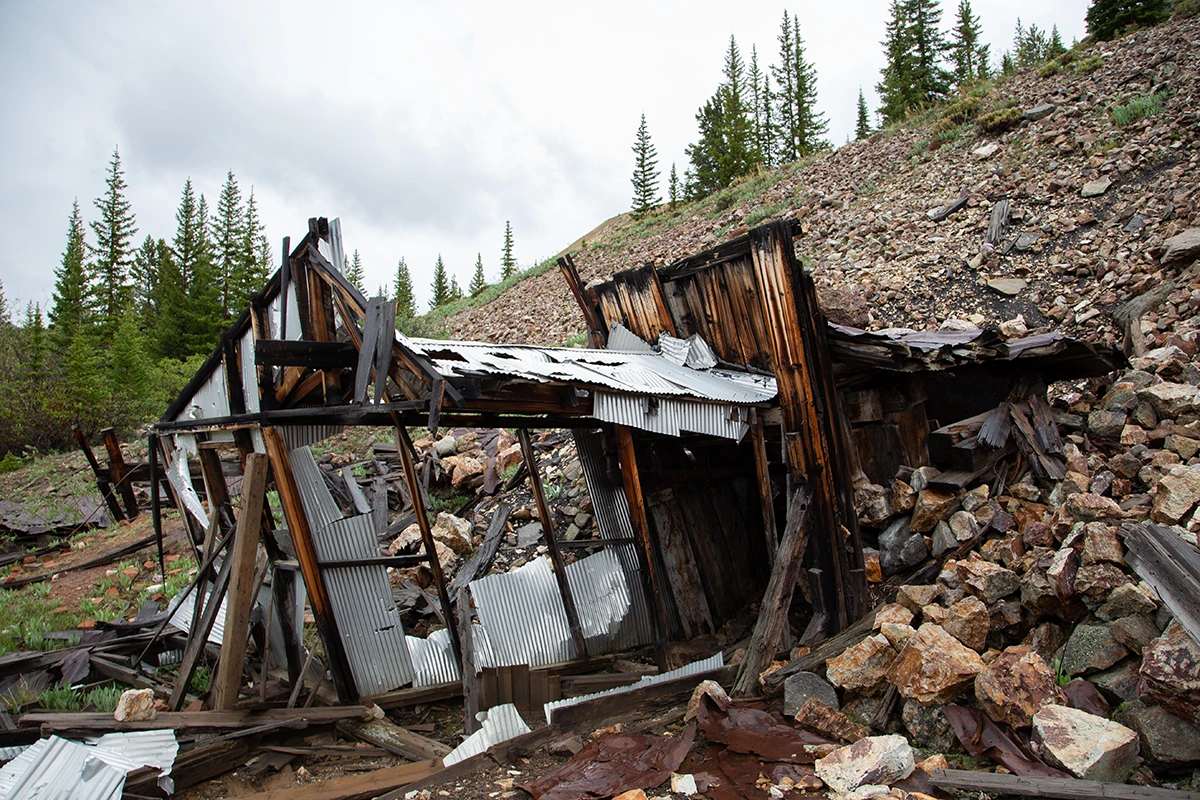
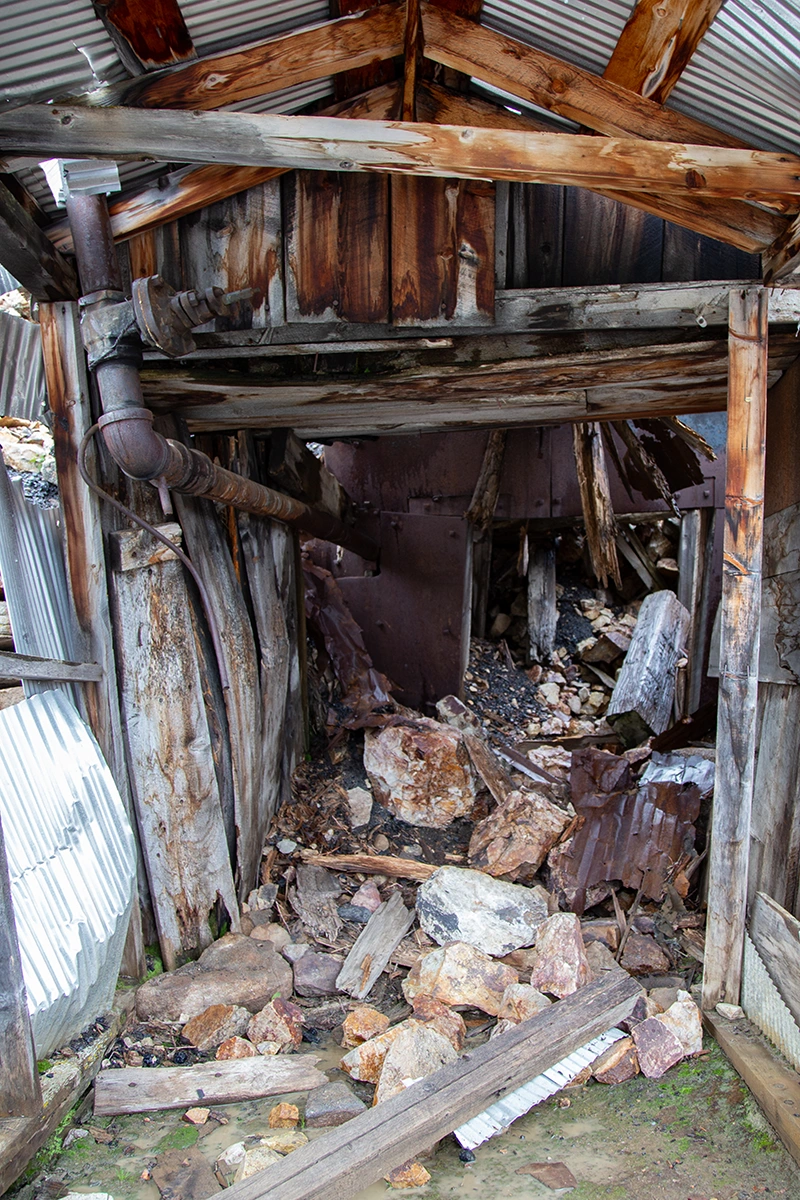
Stumptown
This area in particular, "Stumptown" was one I tried to reach but I couldn't get down to these buildings due to the road being flooded. I tried going the only other direction and wound up going up a very steep boulder climb only to get to the other side and find another section that was flooded too deep to risk.
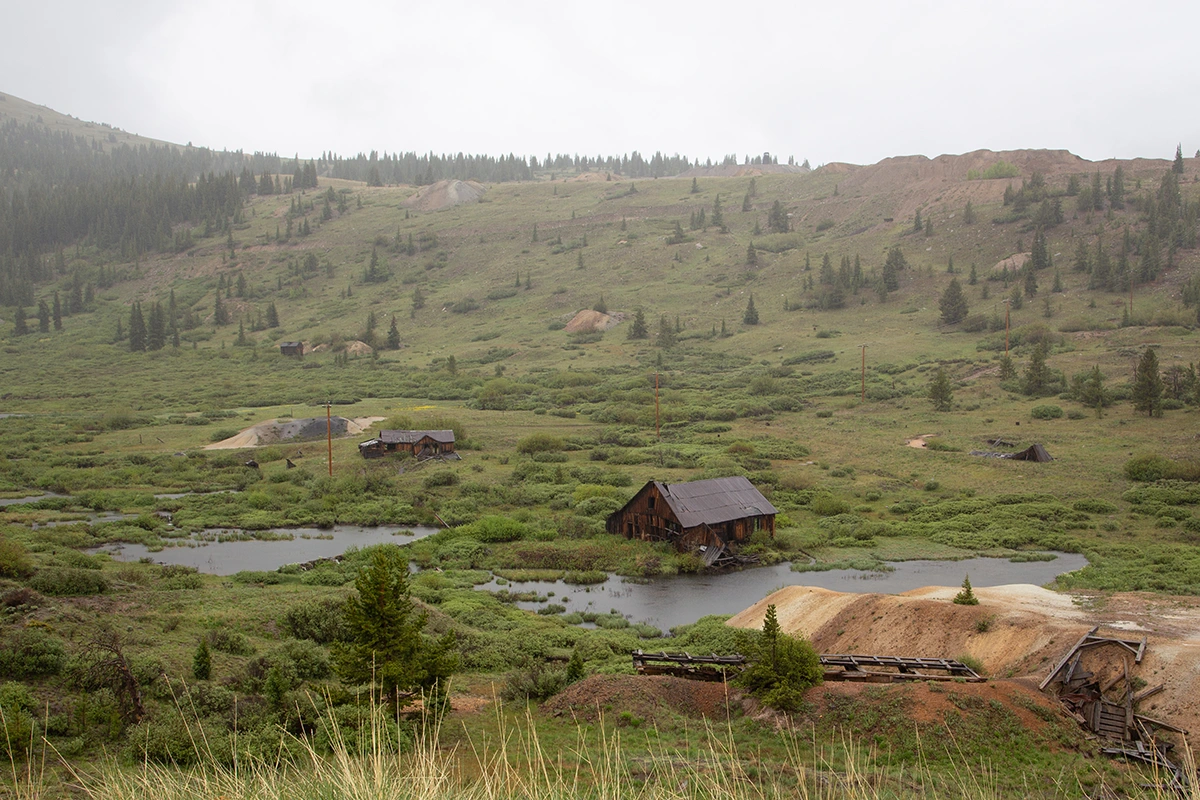
New Monarch Mine
This is the Ore Bin of the New Monarch Mine and is one of the more complete ruins out here.
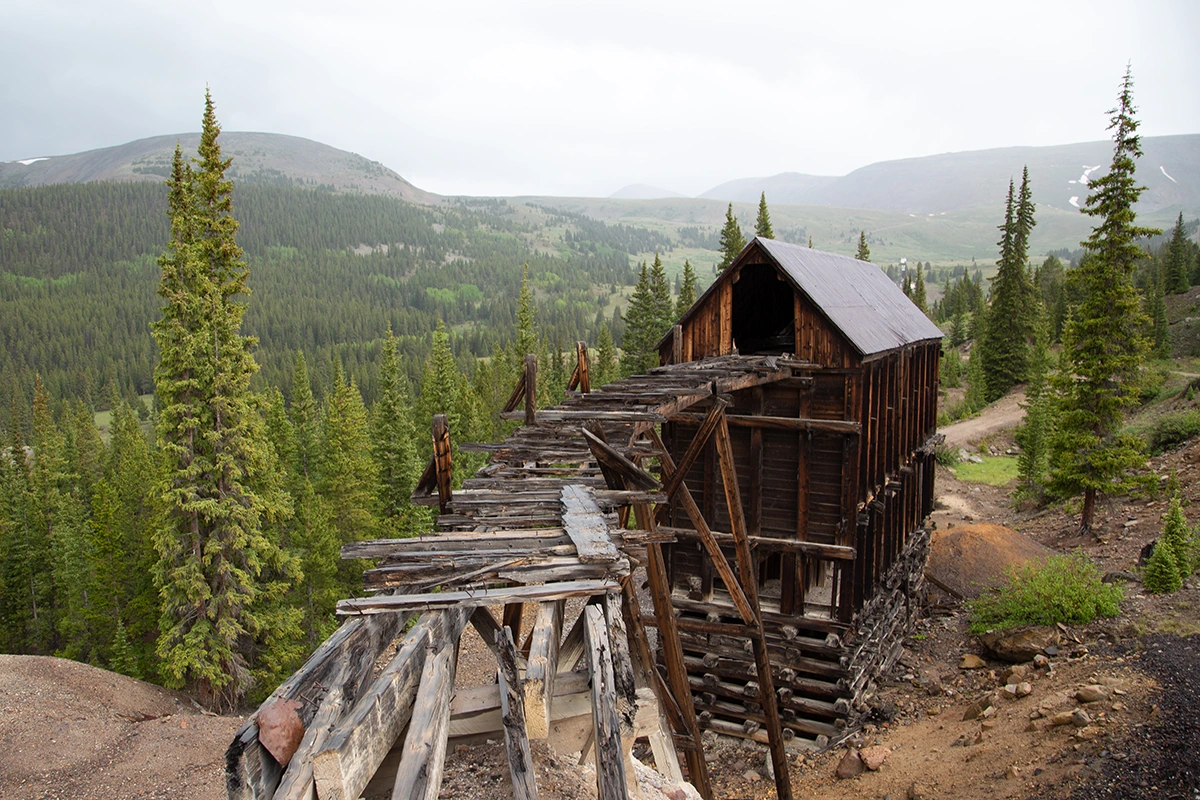
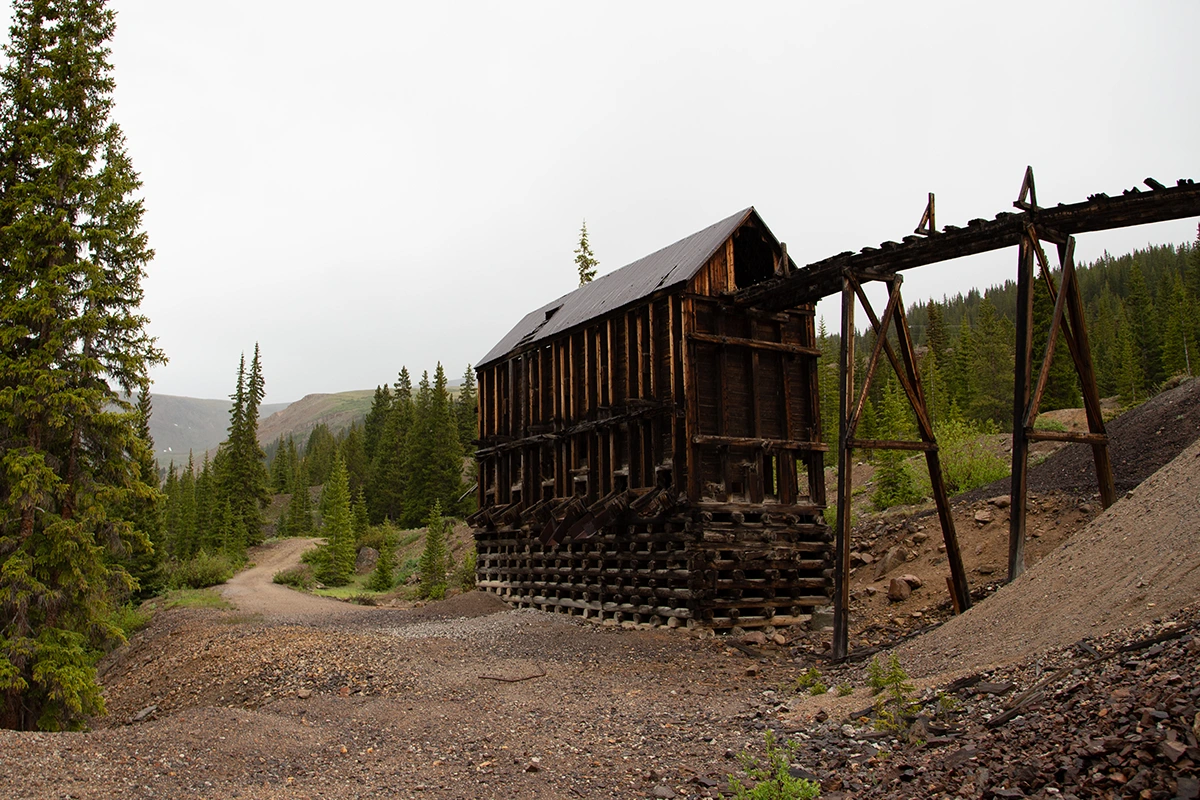
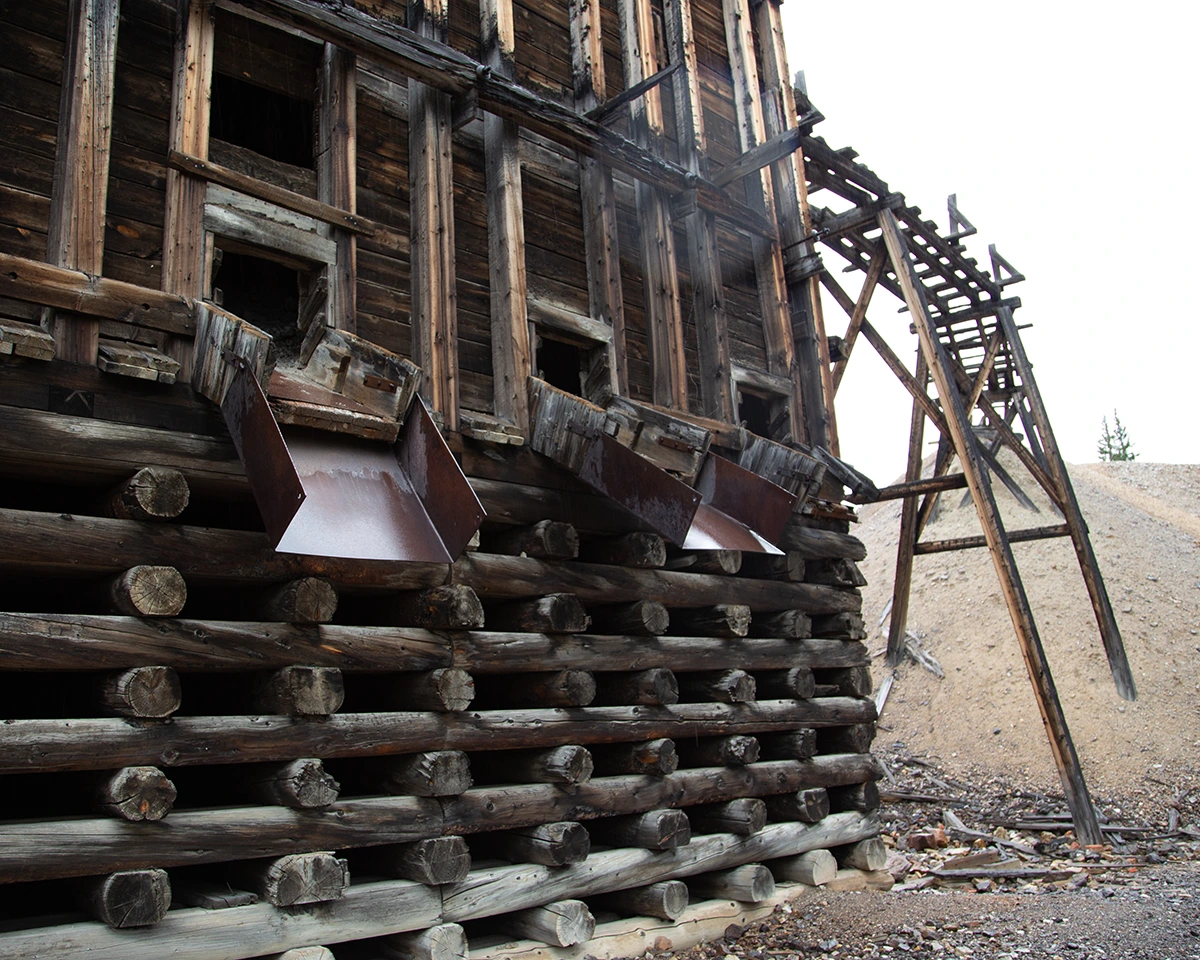
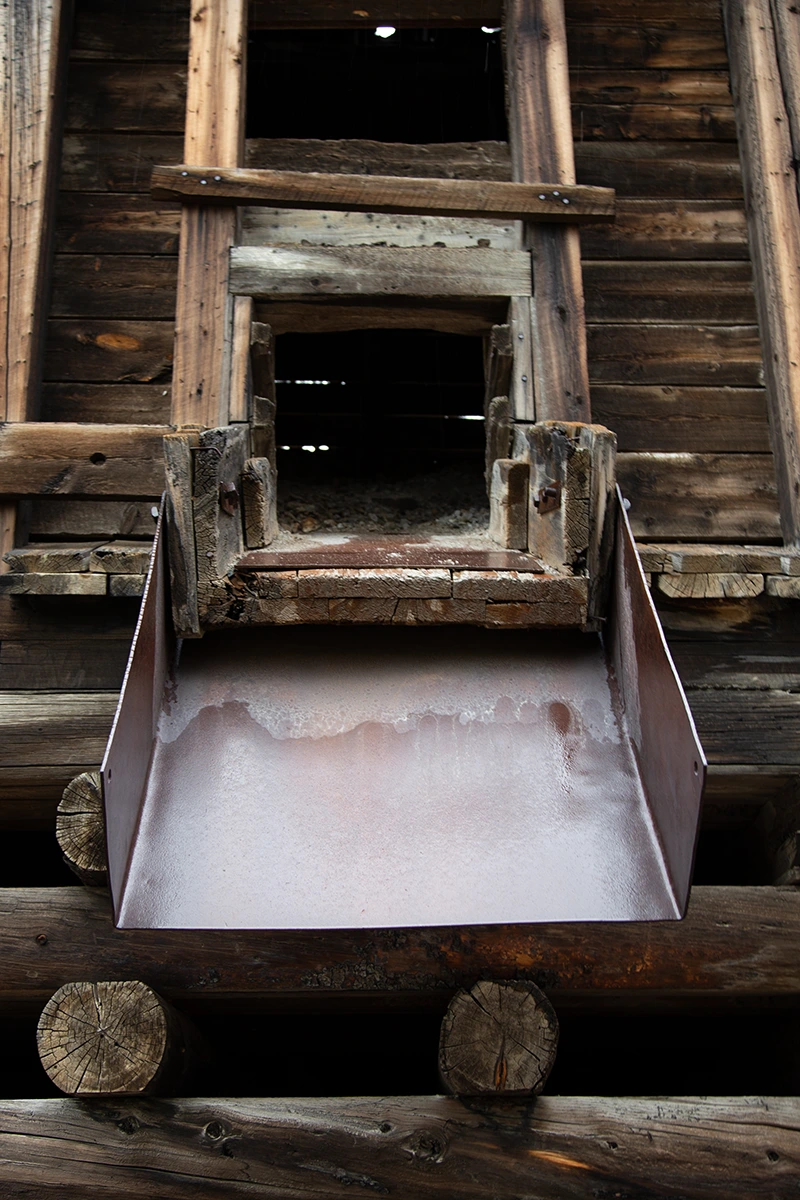
Emmett Mine
The Emmett mine, in the first 3 photos below, was the scene of one of the battles which resulted from the 1896-1897 Leadville Miner's Strike.
The Leadville miner's strike lasted 9 months from June 19, 1896 to March 9, 1897. Before it was over, the Western Federation of Miners would wage bloody war against the wealthy industrialists who controlled the mines. The union demands were reasonable and included fair pay, shorter hours and better working conditions. The mine owners were filthy rich industrialists who were well organized and didn't care what the miners wanted. They fought solely to protect their profitability.
This was a time of considerable changes to, and consolidation of, the mining industry. As mines became more industrialized, owners became increasingly separated from actual mining activites. The mine owners in turn became less sympathetic to the concerns of the miners themselves. By the time the smaller operations consolidated with large firms, mine owners tended to be wealthy bankers and businessmen who only cared about profit and who had never stepped foot in a mine.
One of the key events that lead up to the strike was the Panic of 1893, during which the price of silver dropped by 37.5%. The Sherman Silver Purchase Act had just passed and the details of the act inadvertently caused a run on gold, tanking the price of silver. Mining companies immediately reduced miner's wages to $2.50/day in order to conserve profit and naturally, they kept the wage decrease in effect long after the panic was over.
The unions advocated for basic things such as 8 hour work days. Denver had begun enacting 8 hour days back in 1890 but by 1896 it was still common for some Leadville mine employees to work 12 hour shifts. They also, understandably, asked for decent wages paid in legal tender instead of company credit. They also asked for health care for miners and for disarming of guards and friendly relationships with employees. Mine owners claimed that they hadn't made a dollar in two years. Curiously, however, 1895 marked the highest overall output over the past 6 years and, in reality, Leadville had become Colorado's largest mine camp, having produced 9.5 million ounces of silver. The mine owners openly antagonized the miners in a variety of ways. In 1894, a Leadville mine owner ordered the superintendent to "put off payday until say, the 10th or 15th' so that stockholders could be paid a dividend. Mine owner John F. Campion was even so bold and stupid as to be observed buying Italian marble and other luxuries while the strike was going on, at a time when the owners claimed they "hadn't made a dollar". In 1889, Leadville miners went to Denver to help pass a mine inspection bill that sought to improve worker conditions in the increasingly deep and dangerous mines. The bill passed, but nothing changed because the state failed to fund the program.
In May of 1896, a group of union representatives approached several mine managers to ask for their pay to be reinstated back to $3/day. The mine owners refused to even acknowledge the union. They tried again a month later and had about the same luck. Later that same day, Cloud City Miner's Union Local 33 held a meeting where it was decided that all workers still earning the old wage of $2.50/day will strike. At 11:30 that night, 968 miners walked out which forced a number of mines to shut down. The mine owners responded by locking out all the rest of the mines and turning off the dewatering pumps. Over 2,000 miners were now out of work and the entire mining district went silent while the mines slowly filled with water. Unbeknownst to the miners, the mine owners secretly agreed to form their own union insofar as they all agreed to act as one and to continue to not recognize the union.
Due to the fact that the natural progress of unchecked capitalism is corporations owning politicians and the police, it's only natural that the mine owners also effectively owned the police and most business and community leaders at this time. Furthermore, John Campion, the same guy who was busy dealing with the logistics of purchasing Italian marble during the strike, used some of the vast wealth the miners earned for him to hire detectives from a handful of detective agencies to spy on the union. In July 1896, the union acquired rifles and formed squads of "regulators" to expel any potential strikebreakers from coming to work at the mines. Ultimately they were not successful and the Coronado and Emmett mines soon re-opened at the lowered $2.50/day wage.
Despite warnings from union leadership to "keep out of mischief" and "any violation of the law or disturbance of the peace.. is treason to the cause", on September 21 1896, about 50 armed strikers attacked the Coronado mine with the intention of destroying the shaft house. As it burned, the strikers shot and killed a fireman; Foreman of Hose Company #2, 24 year old Jerry O'Keefe, was shot from behind while trying to extinguish the fire. Three strikers ultimately died from from mine workers who returned fire in defense of the Coronado mine. It was only after armed citizens took to the streets (Coronado was surrounded by residences) to chase off the attackers that firemen were able to get to the scene and stop the blaze. The next target was the Emmett mine where a home-made cannon was used to blow a hole through a defensive wall. As the strikers attempted to breach the wall, they were held back by strikebreakers and forced to retreat. One striker was killed in this attack. As a result of these shenanigans, the National Guard was moved in and by that night, some 653 guardsmen were on location. The arrival of the National Guard sealed the fate of the strike which finally relented on March 9 1897 when they agreed to return to work at the $2.50/day wage.
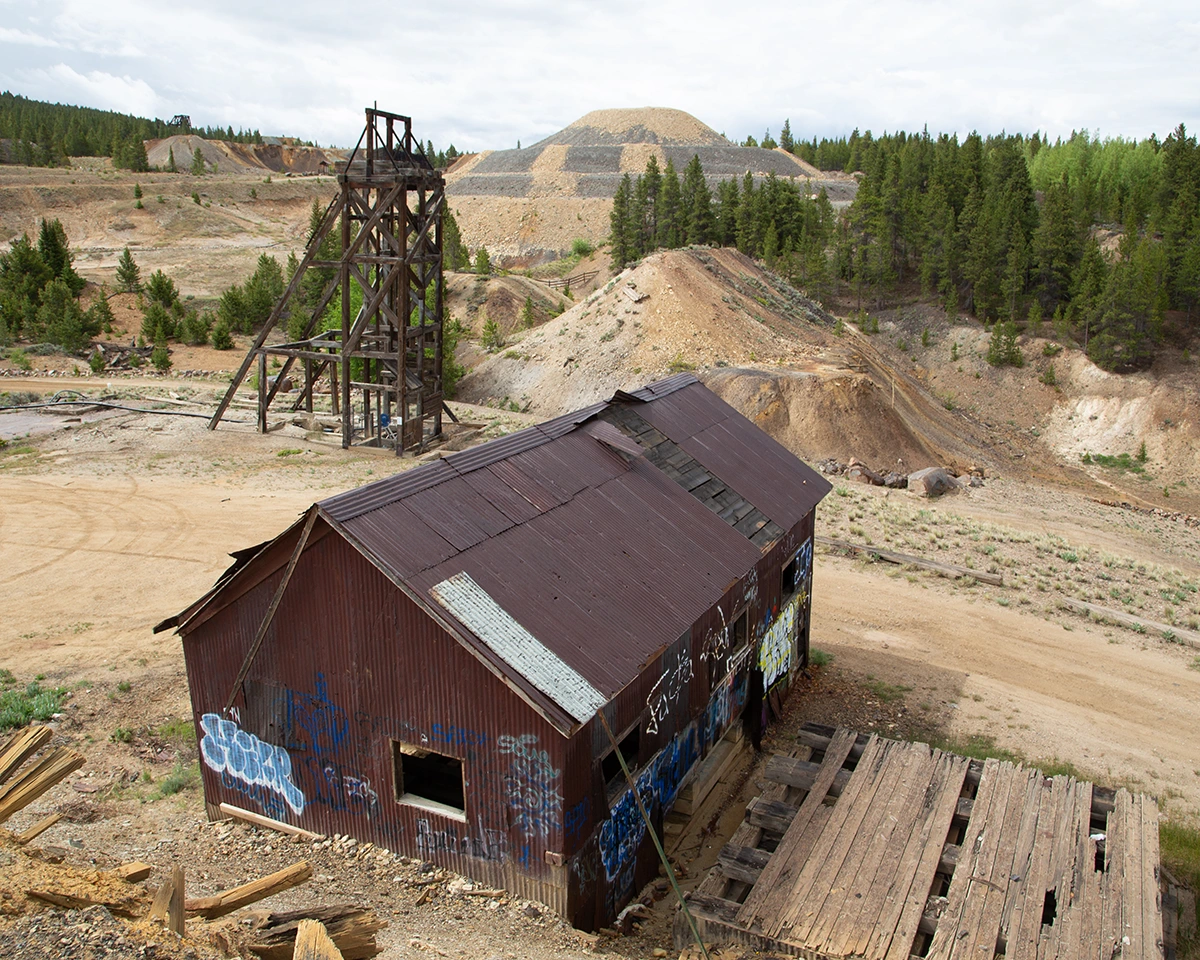
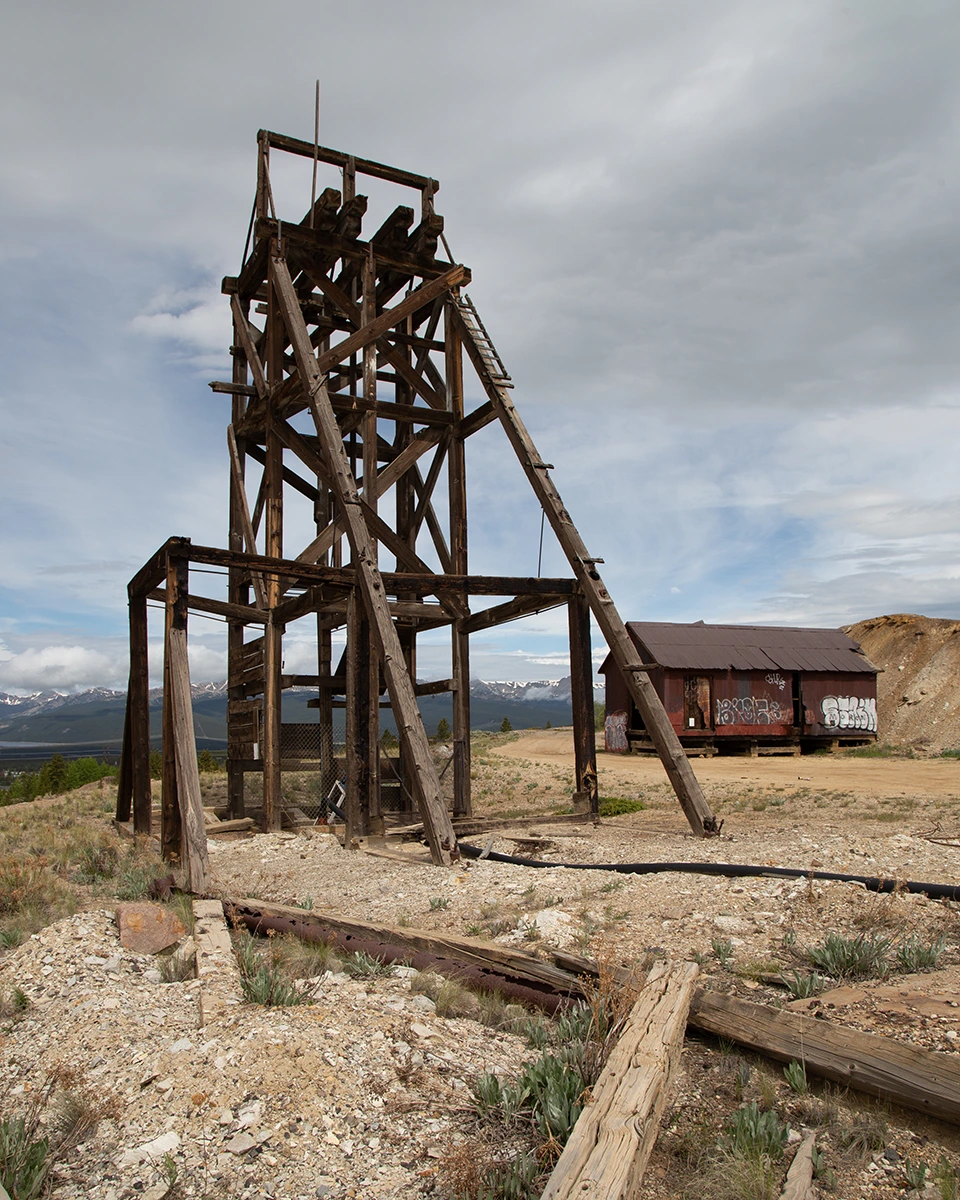
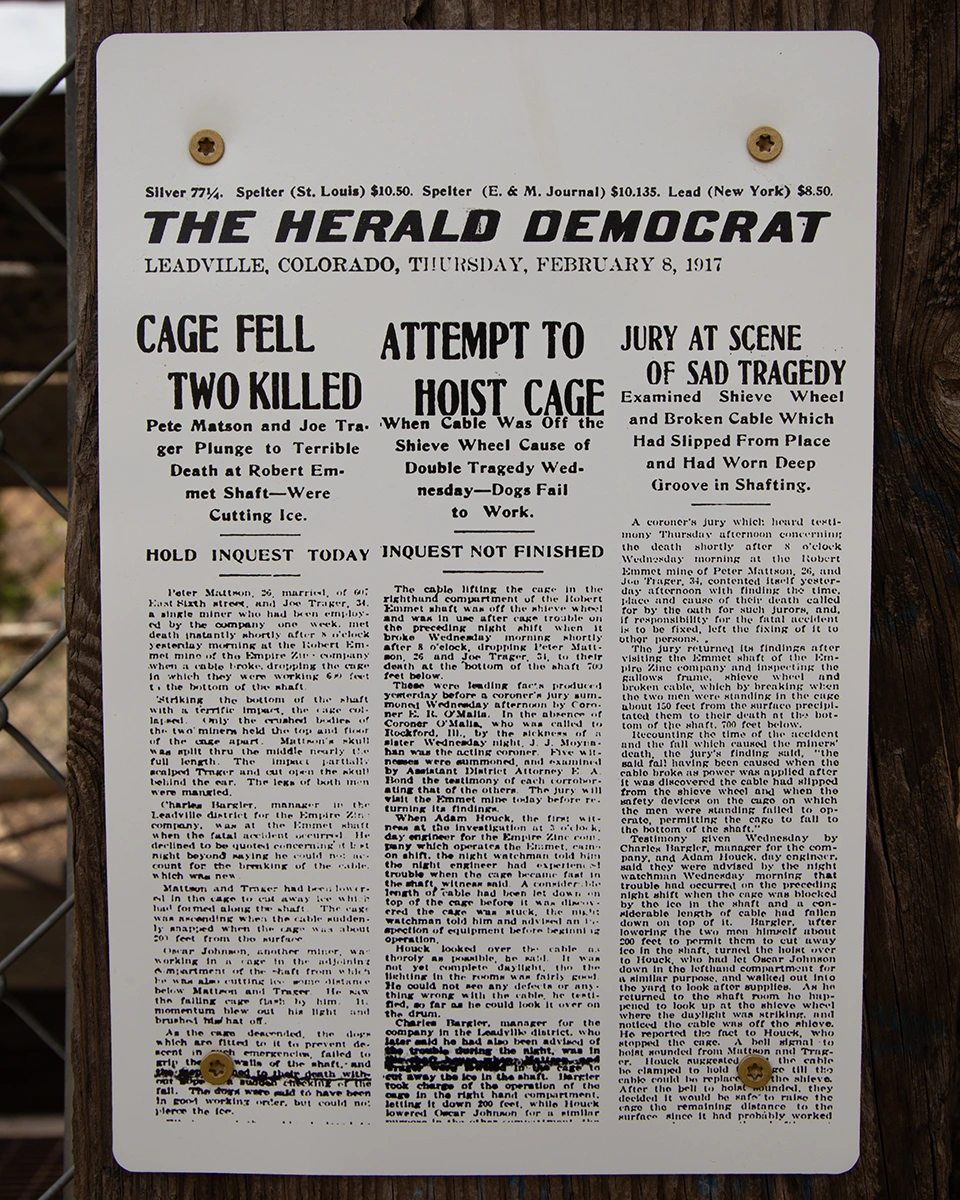
Miscellaneous Leadville finds:
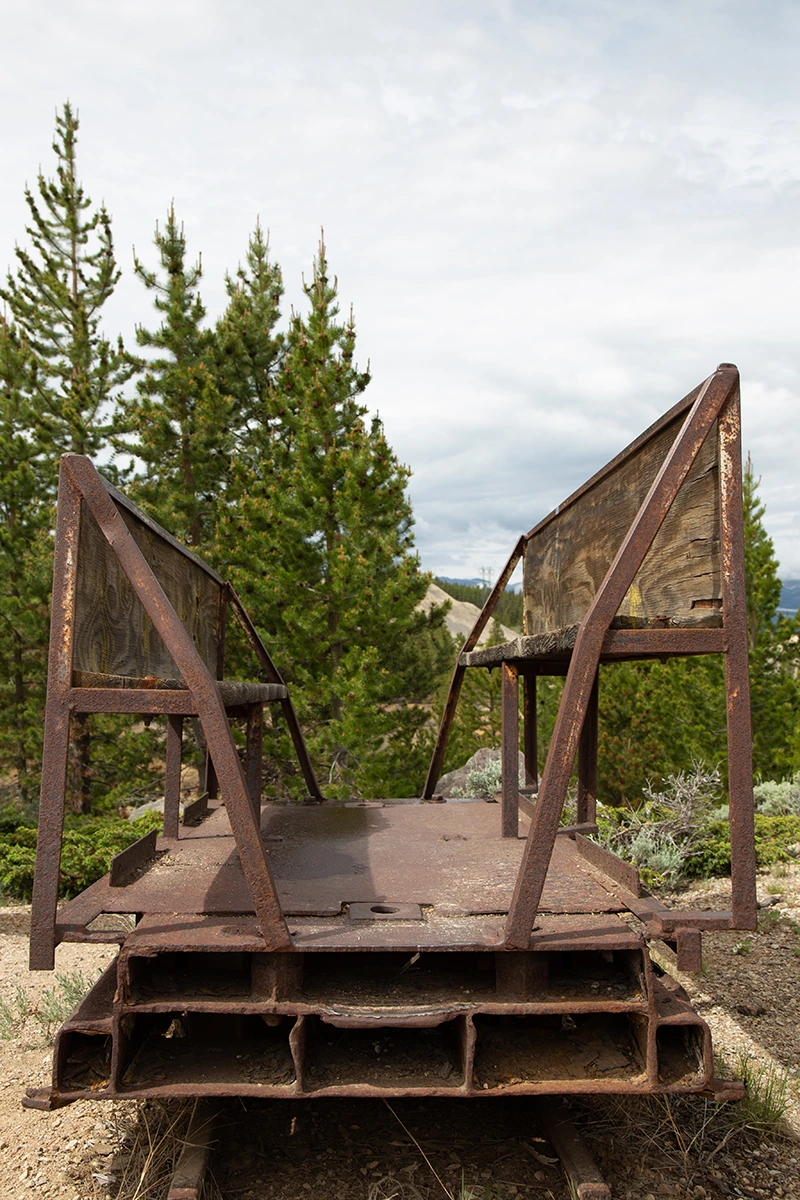
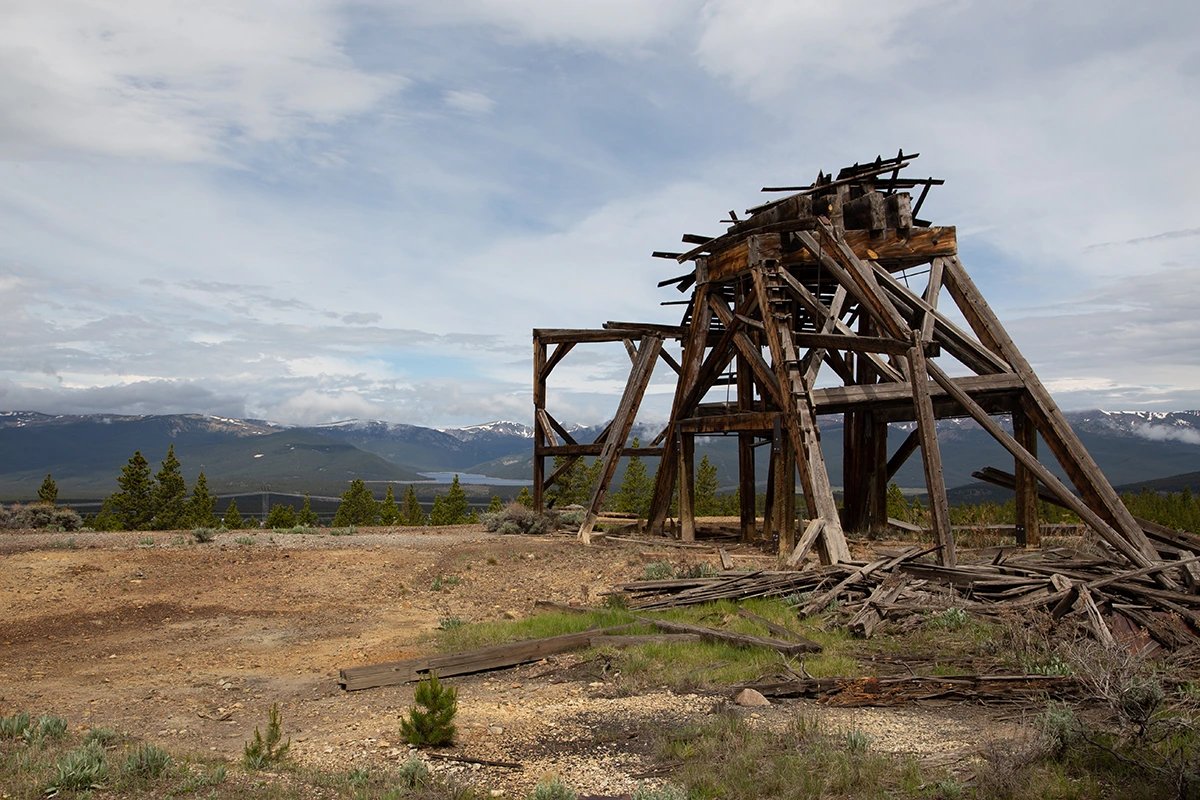
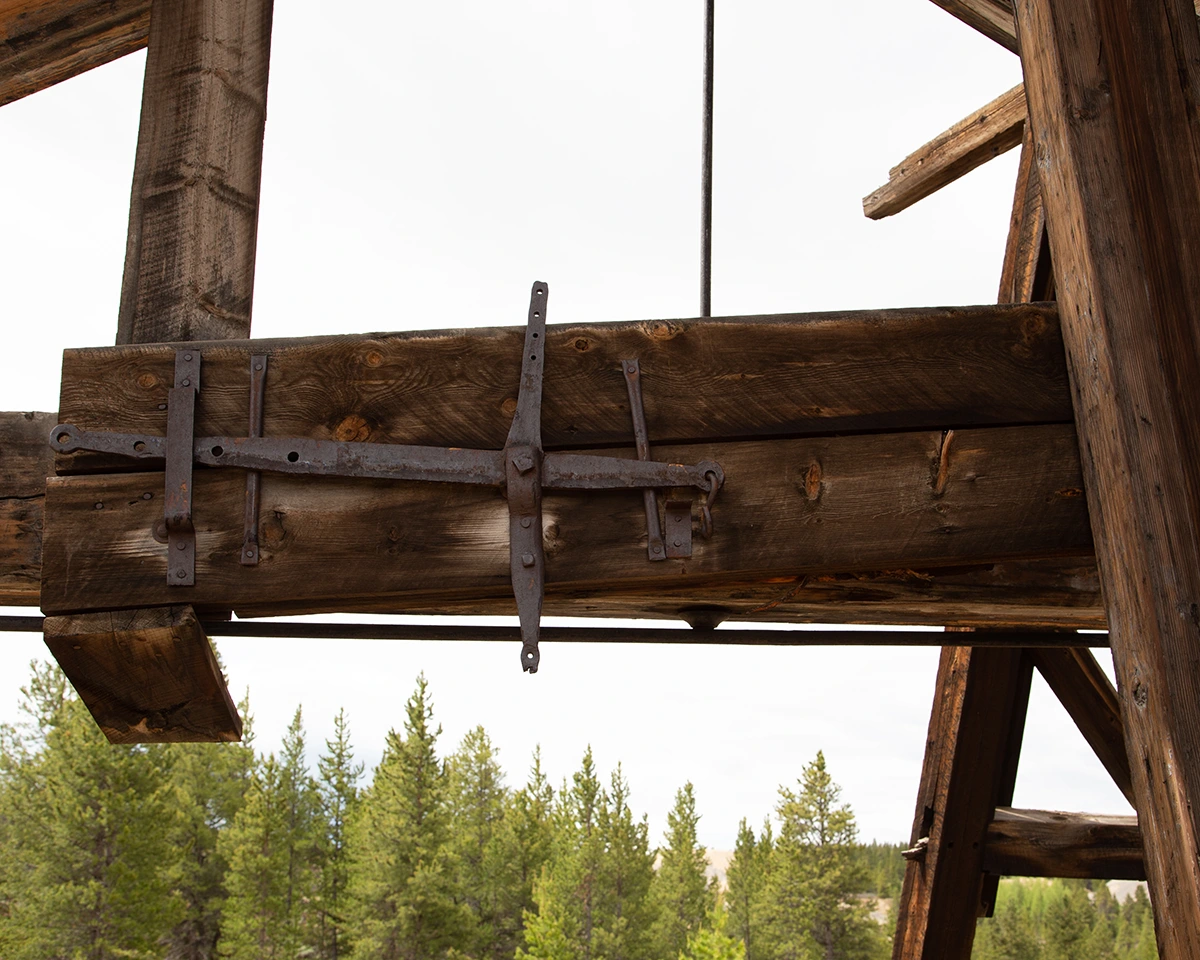
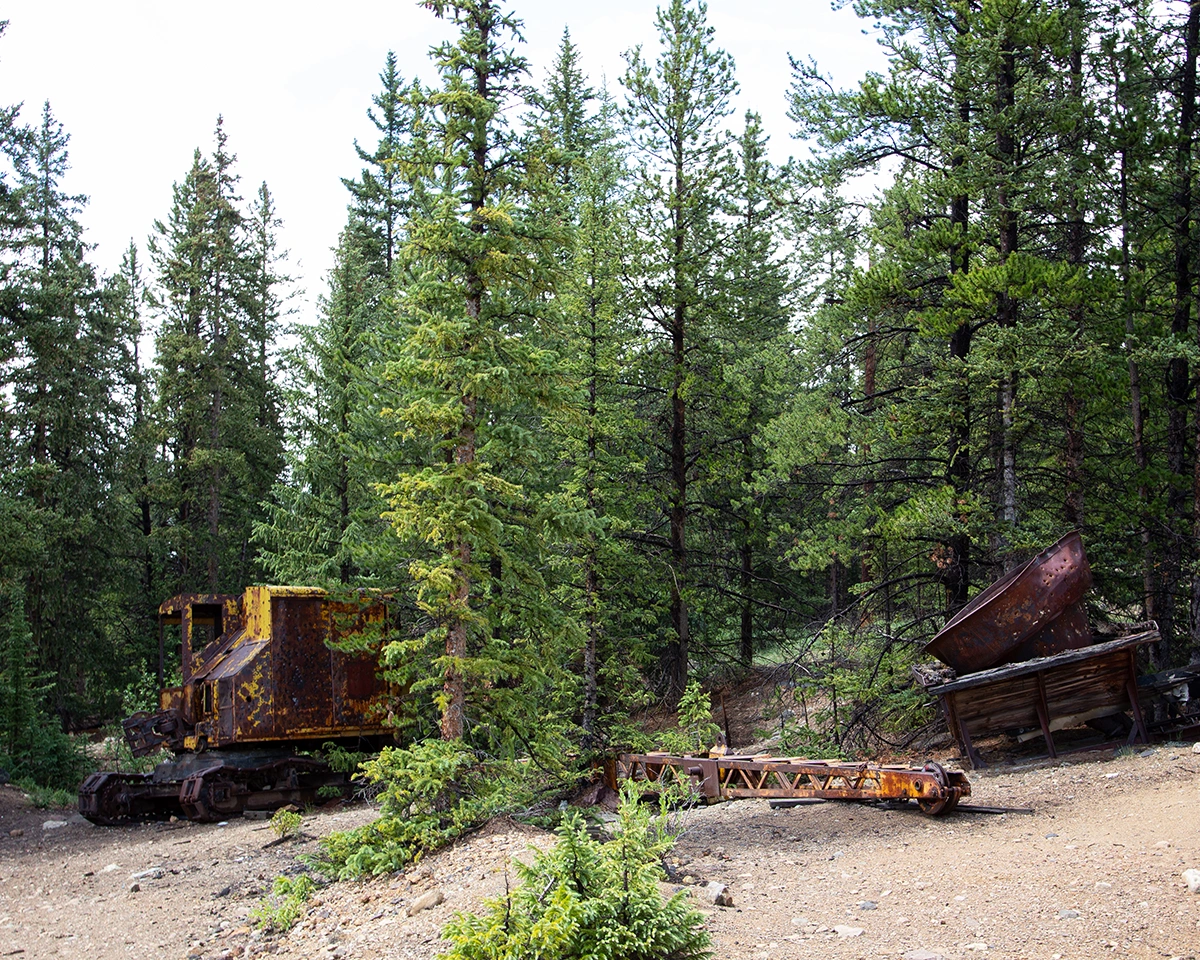
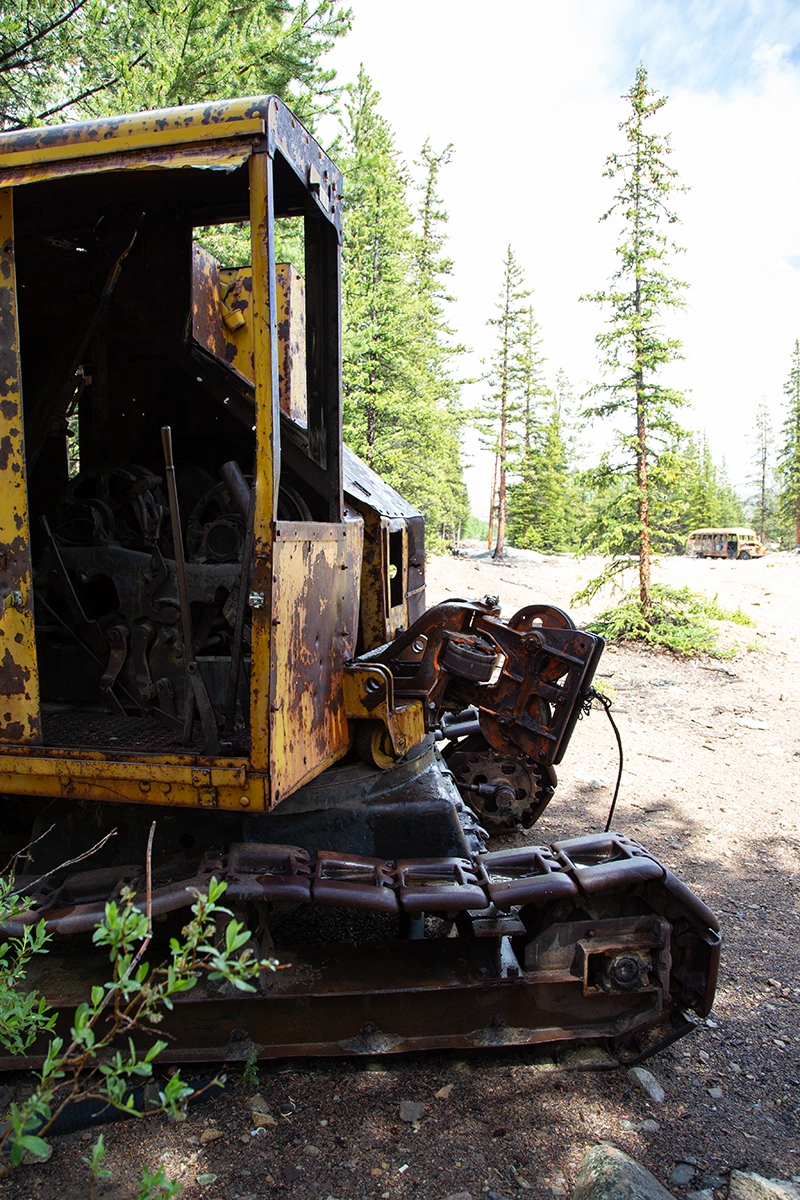
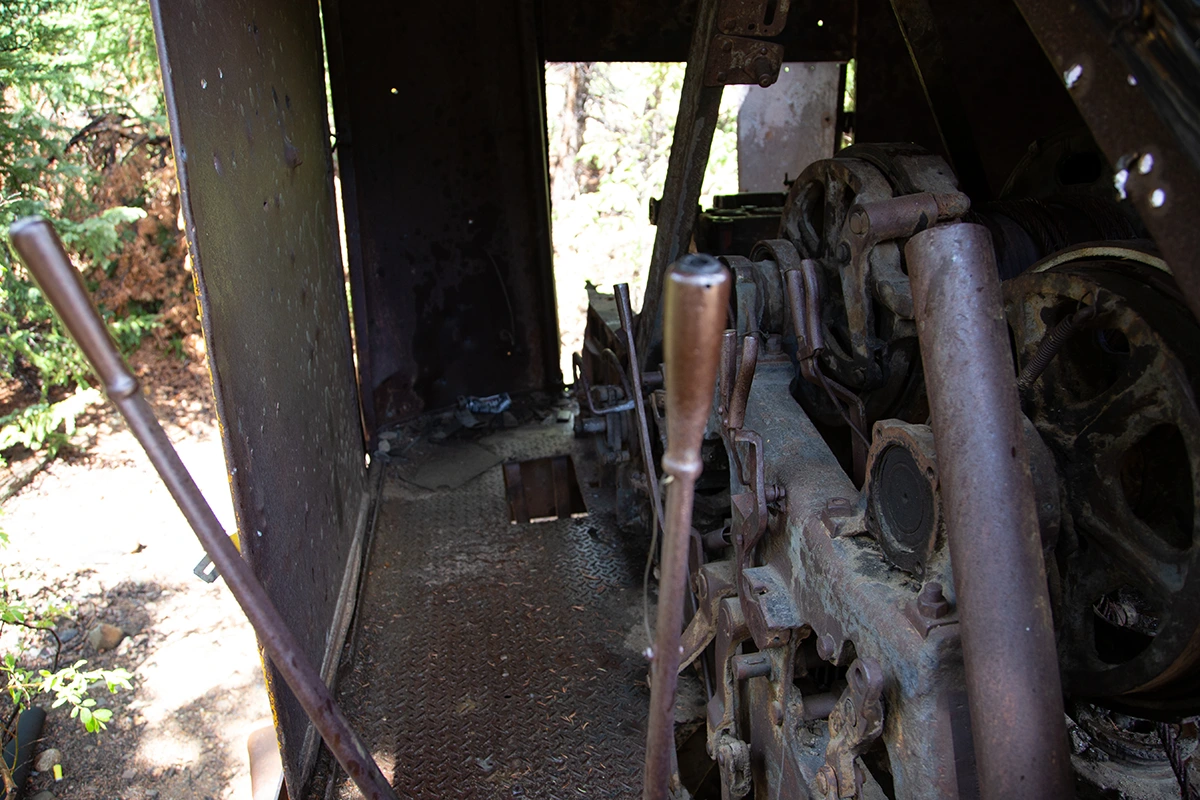
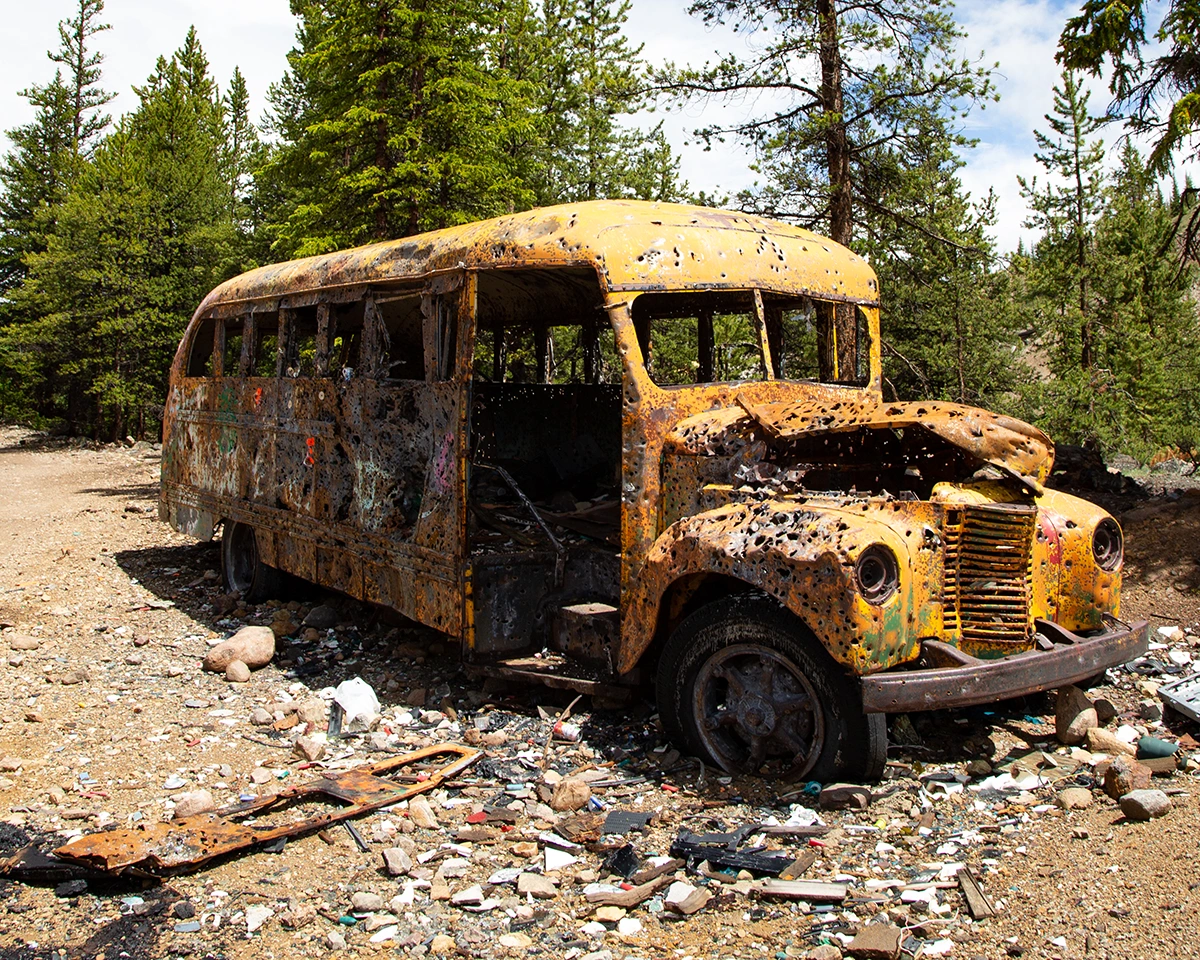
Wednesday, September 22, 2021


Click here for the video.
History of Skaguay
The Skaguay Hydro Electric Power Plant was built in 1899 within the inhospitable area now known as the Beaver Creek Wilderness Study Area about 6 miles south of Victor Colorado. Construction of the power plant was part of a larger project which was composed of 500 men in three separate crews simultaneously building three separate parts of the infrastructure needed to eventually power the nearby towns and subsequently the gold mines that brought them into existence. The project was split into three constituent parts. The first project was the Skaguay Dam and Reservoir. The second project was the construction of the pipeline from the reservoir to the power plant and the third project was the construction of the power plant itself. This would all be orchestrated by the Woods Brothers of Victor whose family was responsible for much of the town of Victor itself considering they owned and operated one of the largest and most prominent mines in the area, the Gold Coin Mine which was basically in the heart of downtown along with the Victor Hotel, Pinnacle Park and the First National Bank of Victor. As owners of one of the local gold mines, electricity would also mean the replacement of mule power by electric locomotives deep in the mines.
The 405 foot long Skaguay Dam was built out of 110,000 cubic yards of rubble generated from blowing up a nearby mountain using 13,000 pounds of explosives, after which the rock face of the dam was reinforced with steel and is said to be the first of its kind in the world. The 23,200 foot pipeline was 30 inches in diameter, mostly wooden and constructed by hand out of 1.5" redwood staves held together by metal bands. The placement of the power plant was decided such that the pipeline would have sufficient pitch (1,165 feet down) to generate enough power to turn the 5 turbines and run the generators. The Woods Brothers had a policy of taking care of their employees and to that end they added a saloon, dance hall and gaming room along with housing, laundry, and a cookhouse to the site. People and equipment were brought to the plant via an aerial tram. The tram was an open cable car located at the edge of a cliff where the road ended. When the rider was prepared to descend, they would touch a metal rod to the cable which rang a bell back at the plant. The ride then took the cart down sheer cliff faces and through a tunnel before reaching the plant. Among the less functionally necessary items to be successfully conveyed to the plant in this manner were a piano and a slate pool table.
Skaguay came online in May 1901, 2 years after construction began. According to "Skaguay: The Miracle of the Gold Camp Near Cripple Creek & Victor", “To celebrate the event for the success of Skaguay, the Woods brothers waited until the 4th of July to put on a real party. Electricity was free and the streets were lit up like a Christmas tree. Old carbon-type, incandescent-type globes were ordered in by the hundreds and burned night and day. Searchlights were mounted on the Gold Coin Mine tower and their light roamed the hills and streets catching parties and dancing in their light. It was a real celebration for the new boomtown and it continued for three days.”
Various floods threatened the dam over the years but none have brought about its demise. The flood of 1912 was so powerful that they dynamited the flood gates to save the dam. The flood of 1921 wiped out all the bridges in the canyon. The flood of 1942 wiped out the tram track and thus cut Skaguay off from the rest of the world for 3 weeks. Unfortunately for the power plant, one flood would prove too much. The flood of June 1965 was brought about by weeks of rain which caused flooding so intense that 21 people died. On June 17 1965, 8 inches of rain pounded the nearby town of Cripple Creek whose three dams all failed. The excess runoff caused Skaguay Dam to overflow, sending a five foot wave over the edge and down the canyon. Over a mile of pipeline was clogged and another half mile was completely destroyed. The pipeline was never repaired and the cost was too great to remove the machinery so everything was left to the wilderness. The land itself was eventually turned over to the government and is now considered a wilderness area.
Historic Photos of the Skaguay Hydroelectric Power Plant

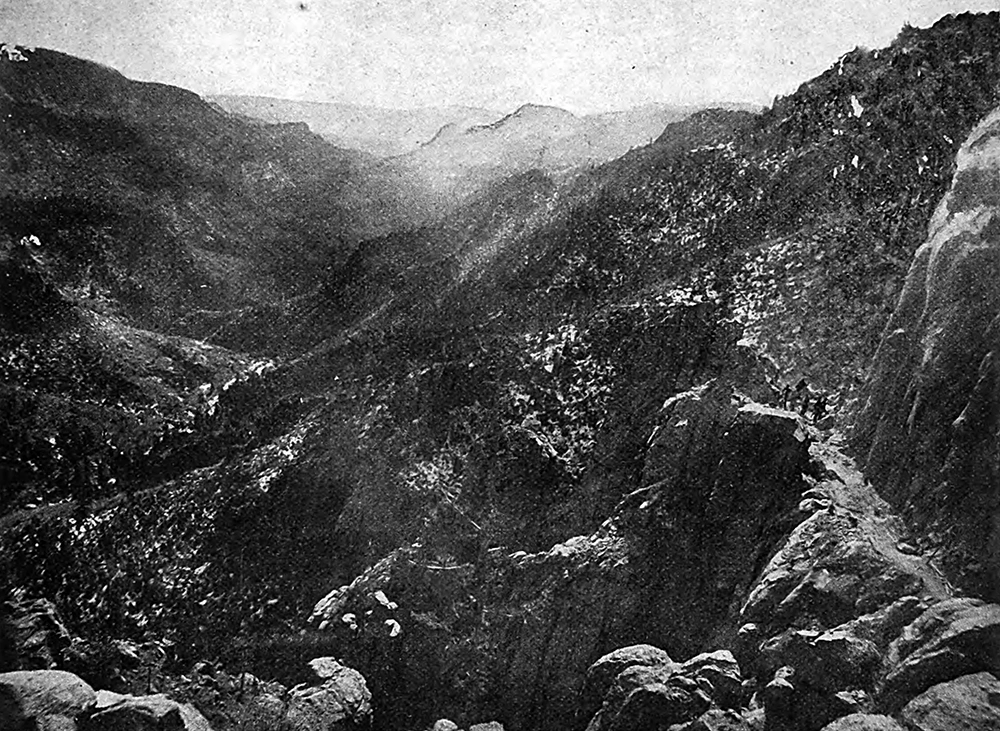
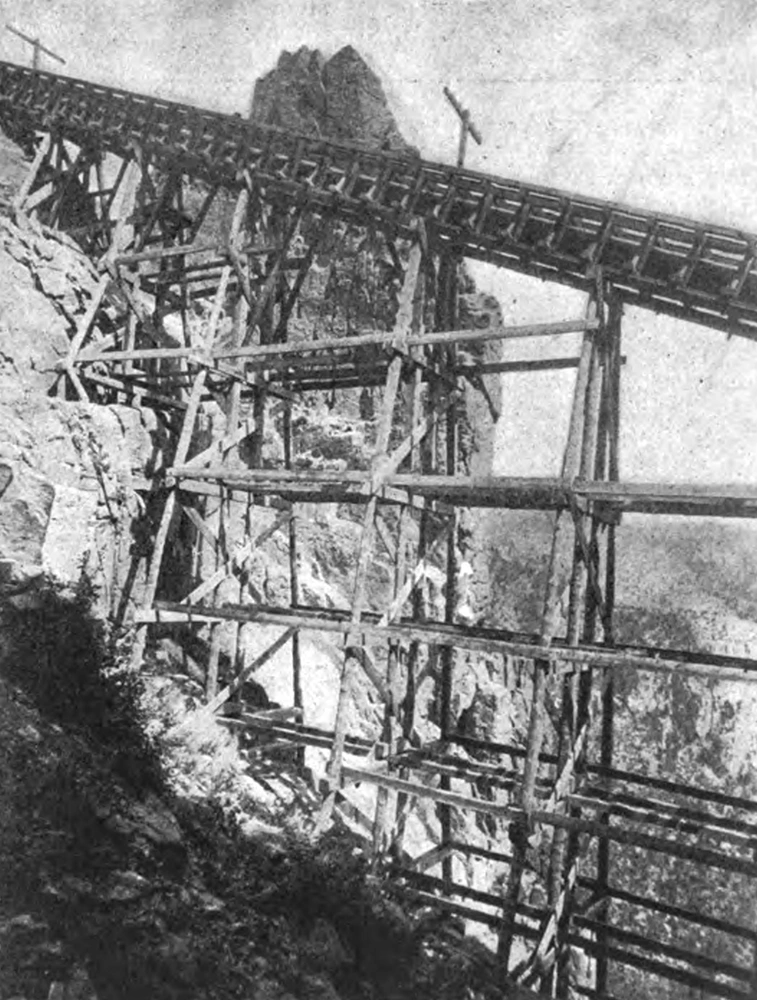
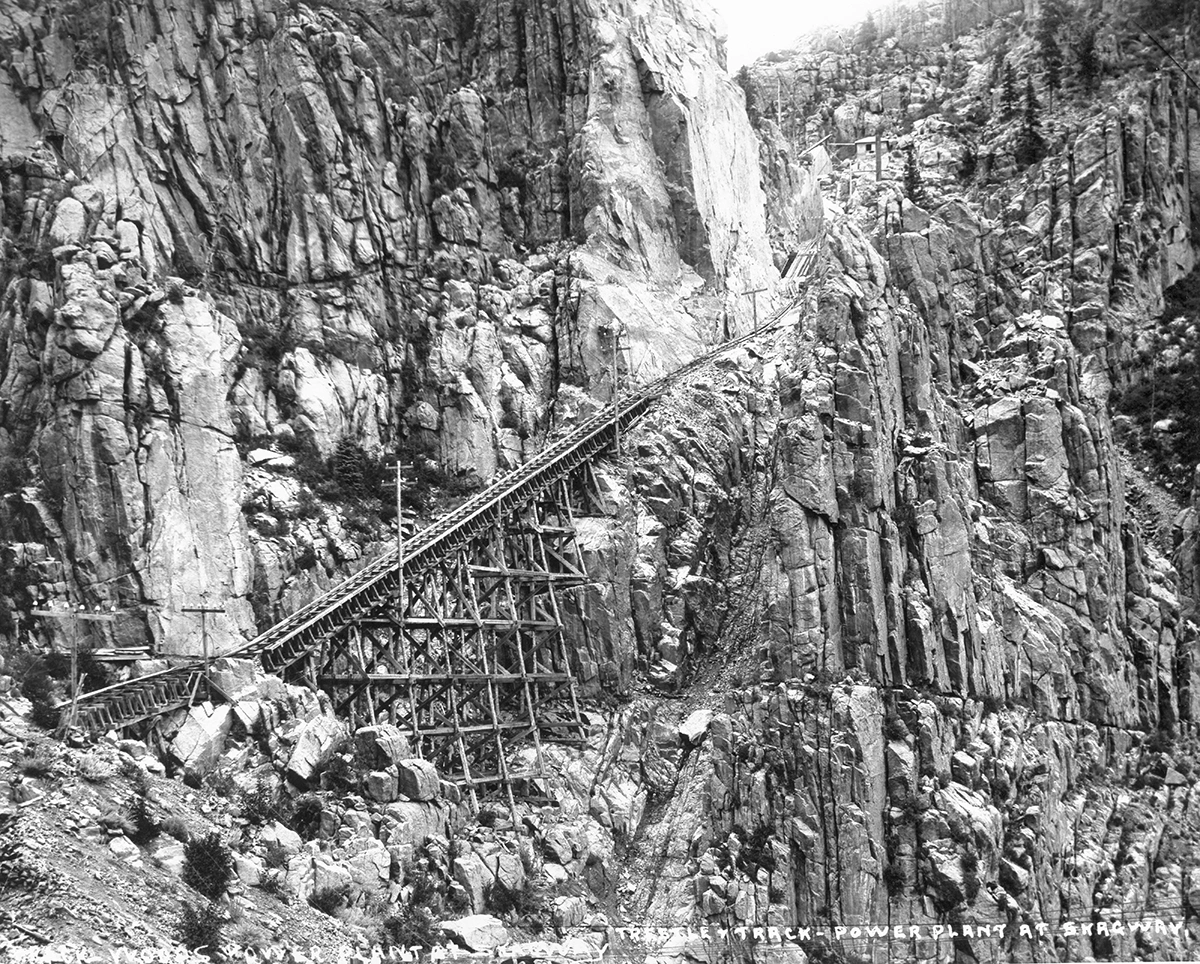
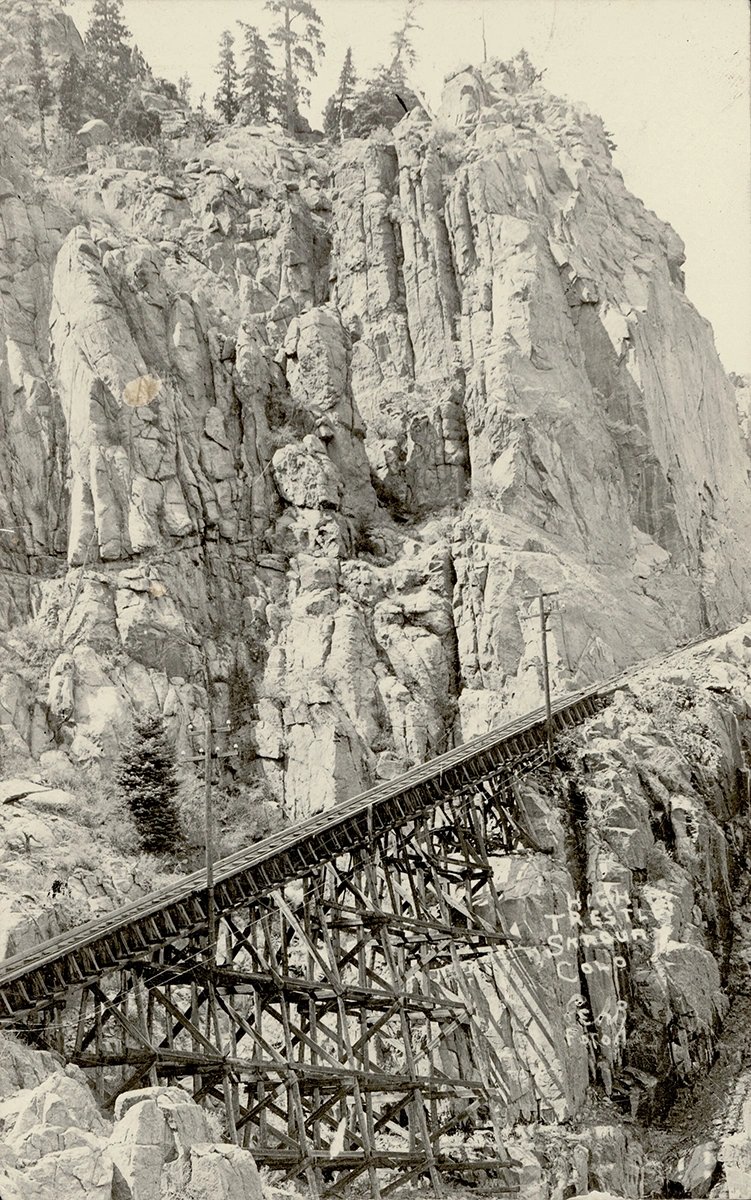
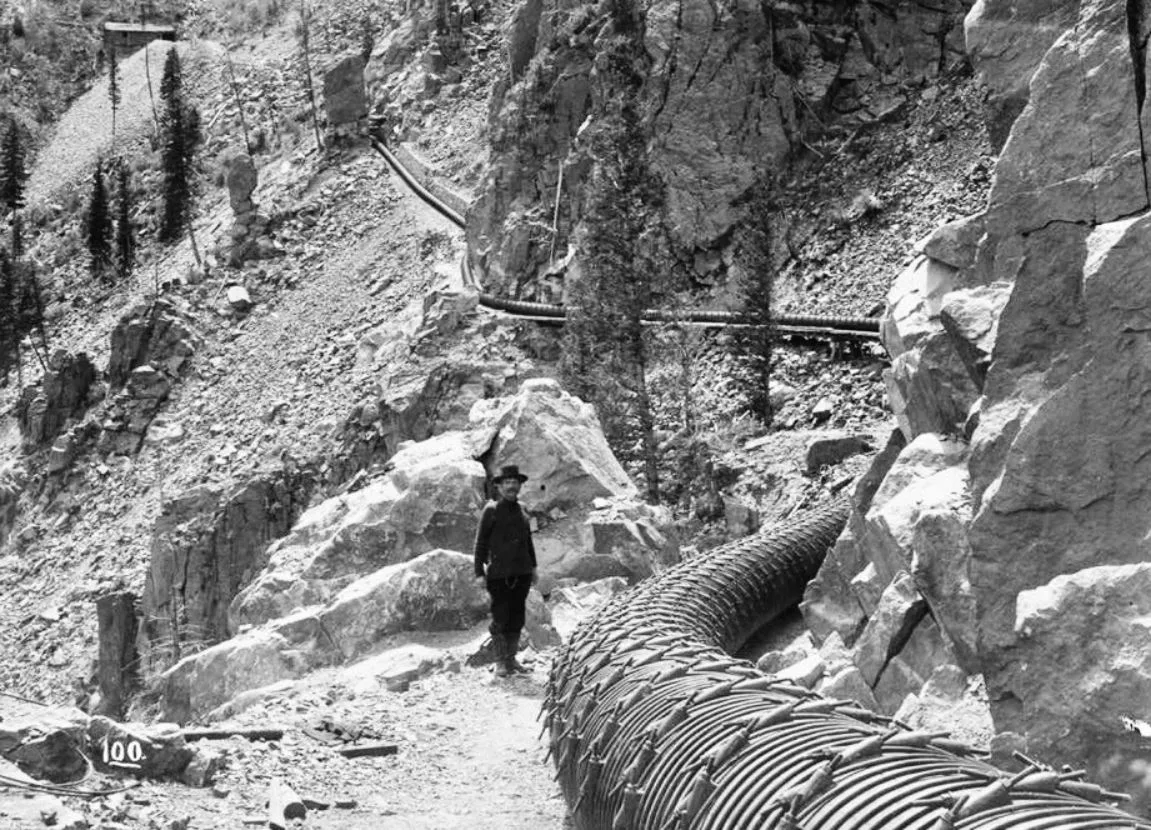
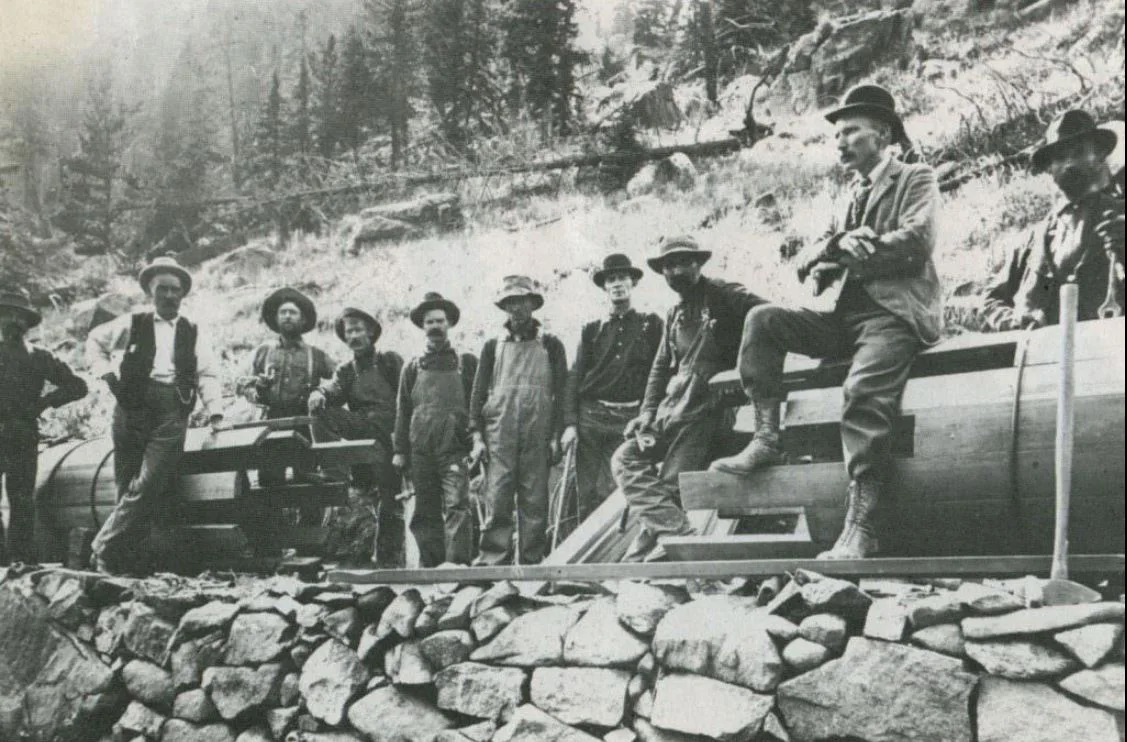
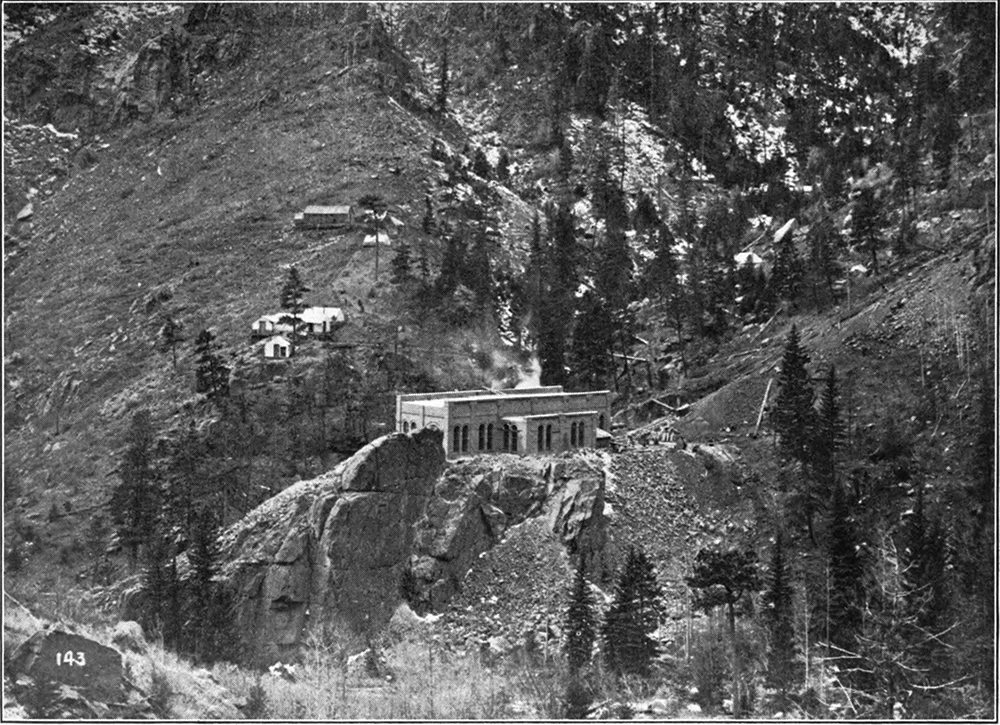
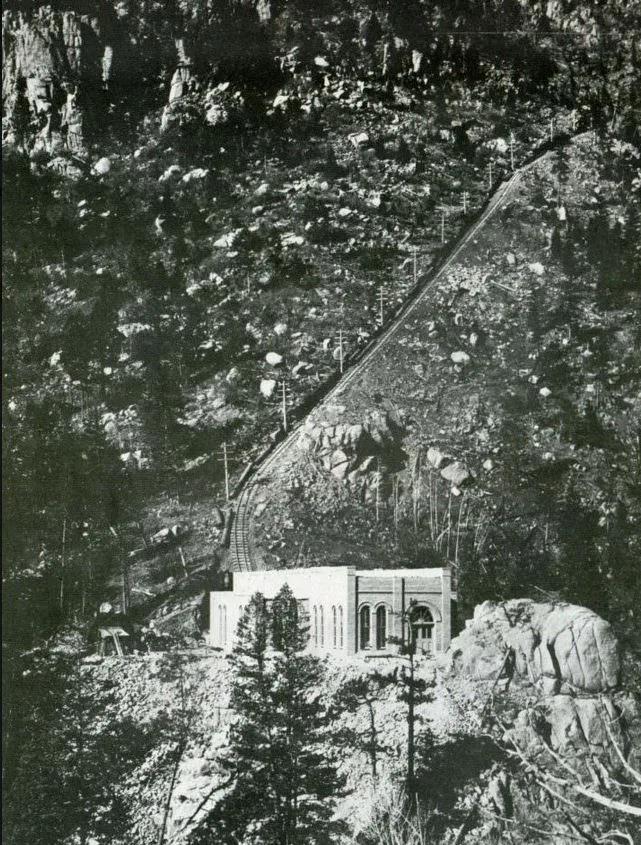
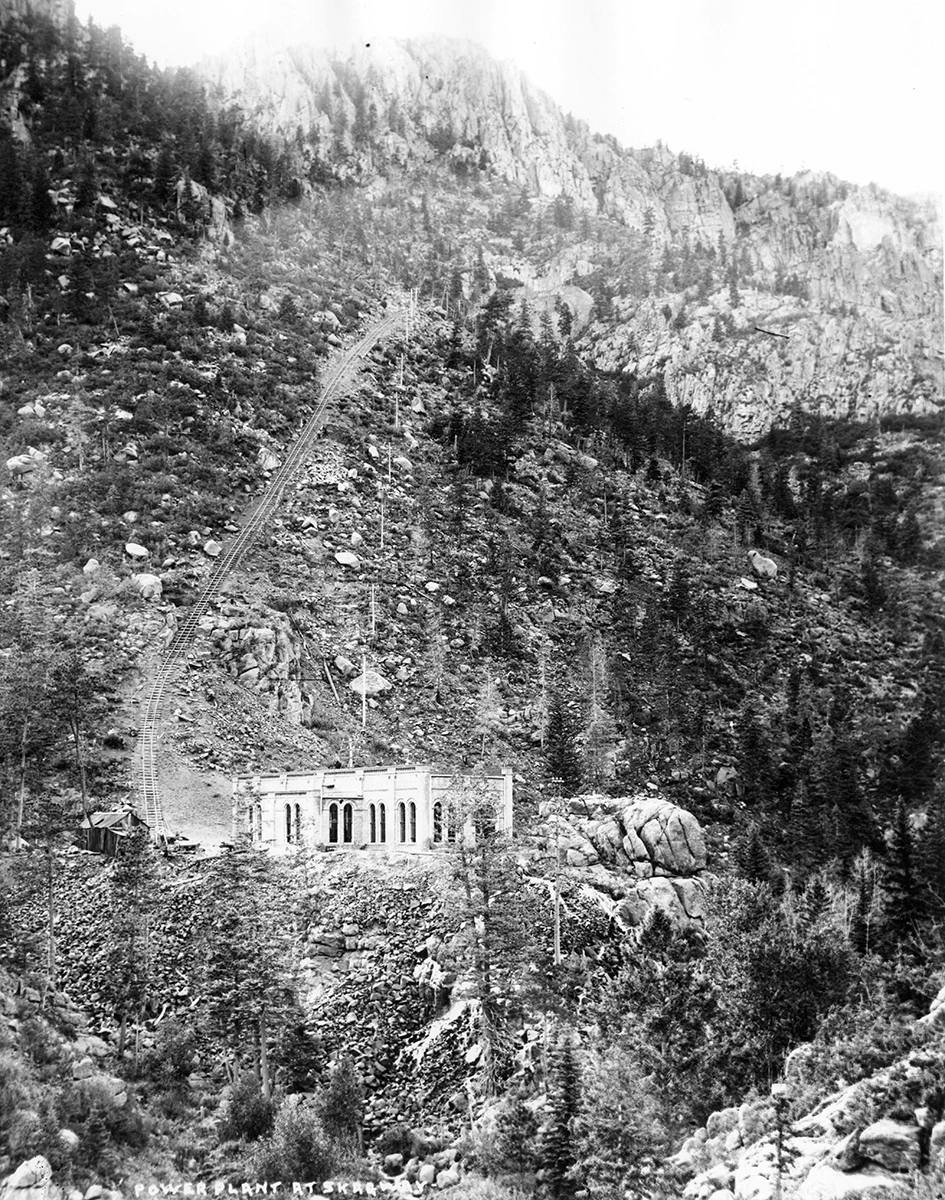
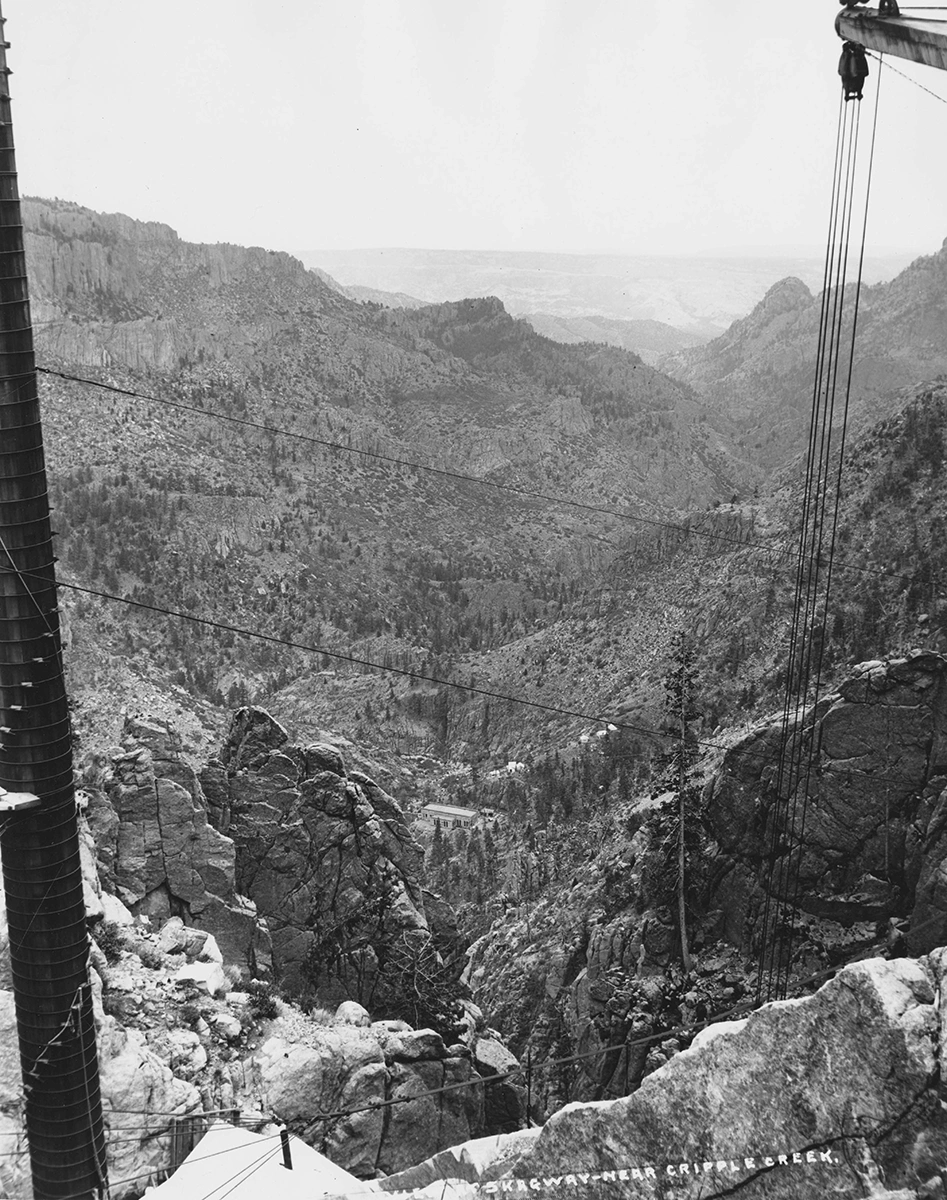
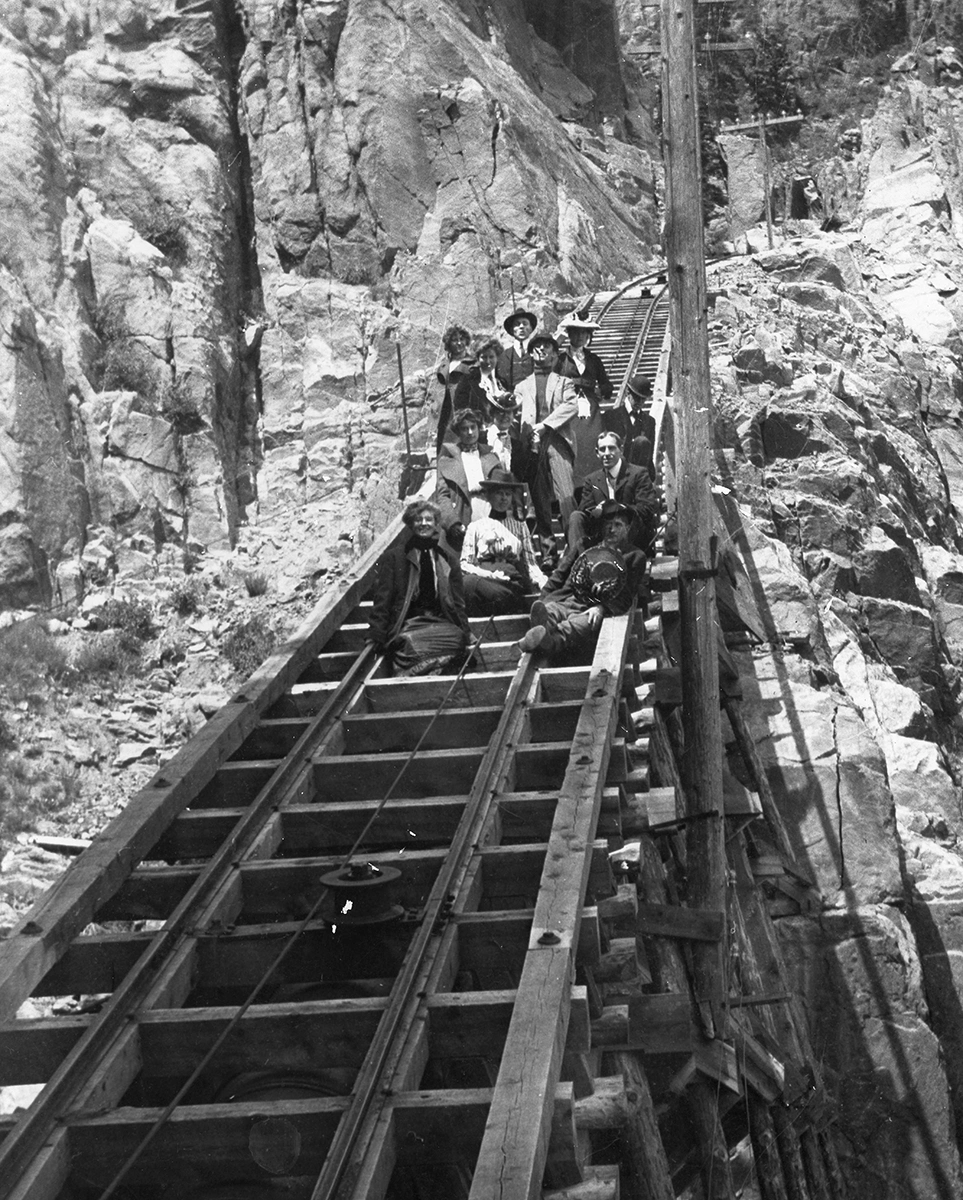
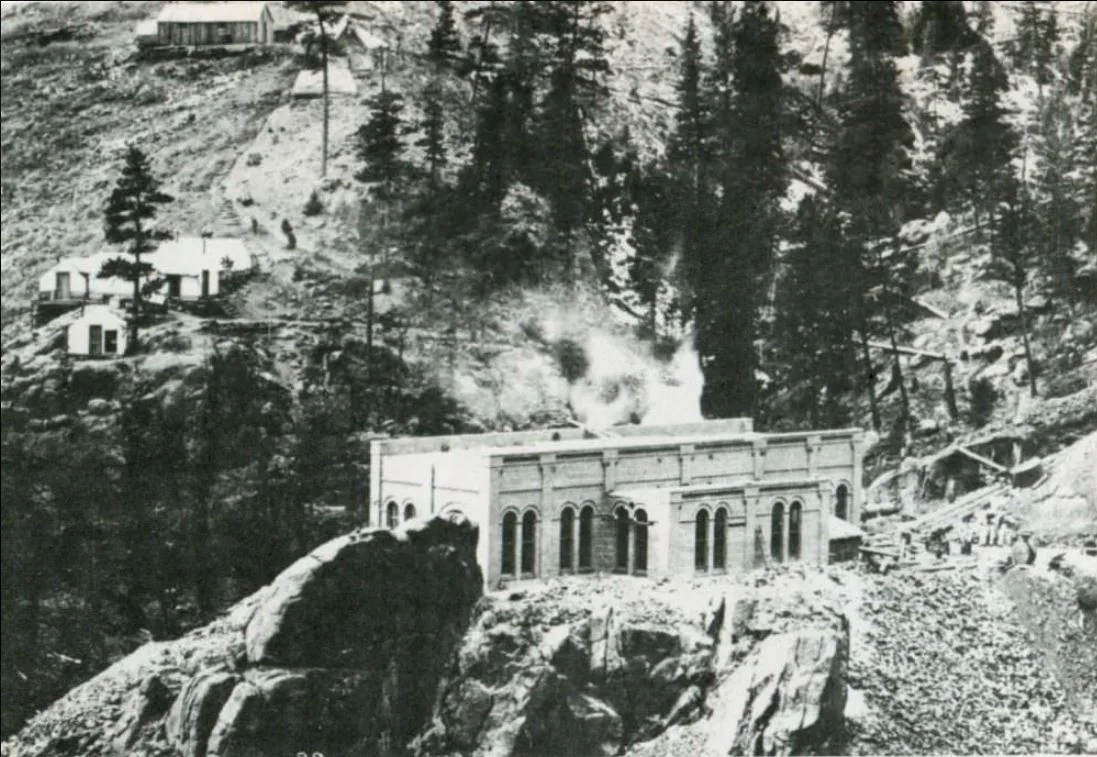
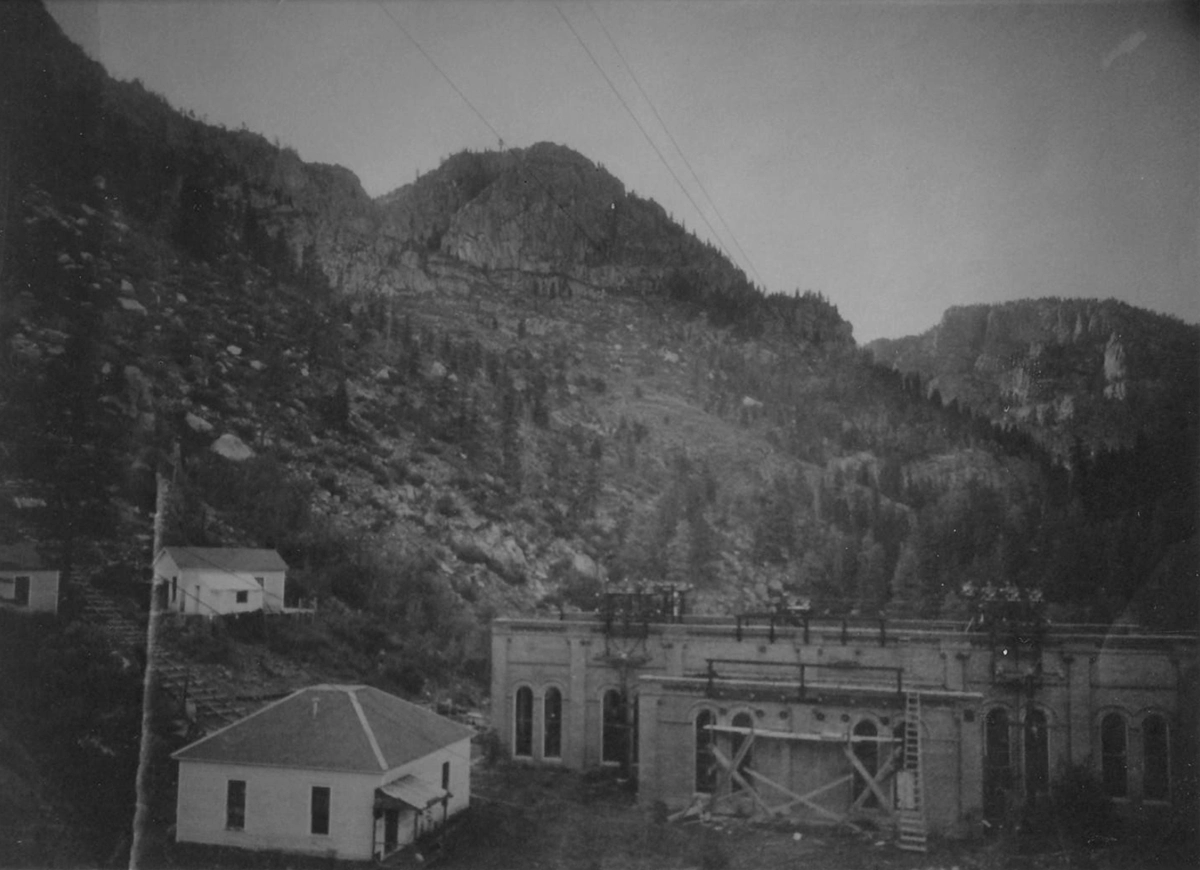
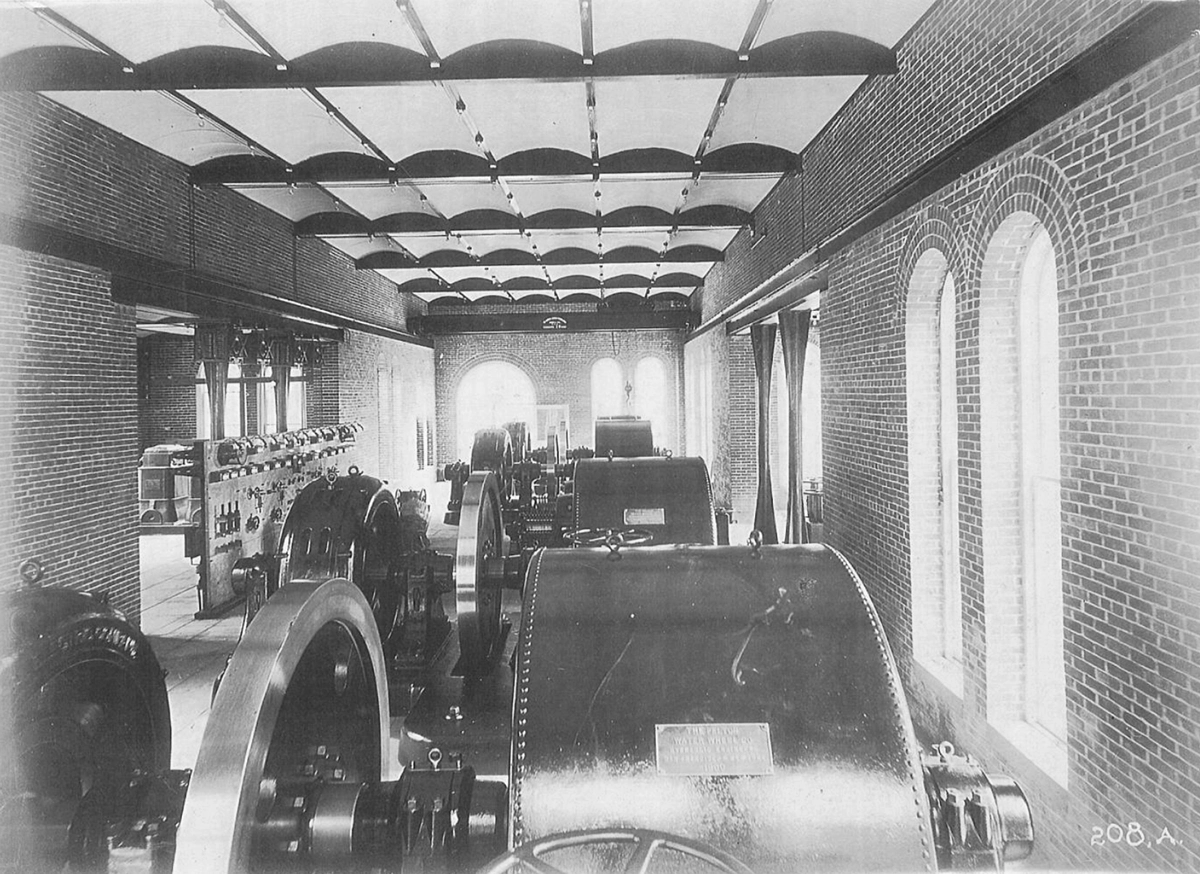
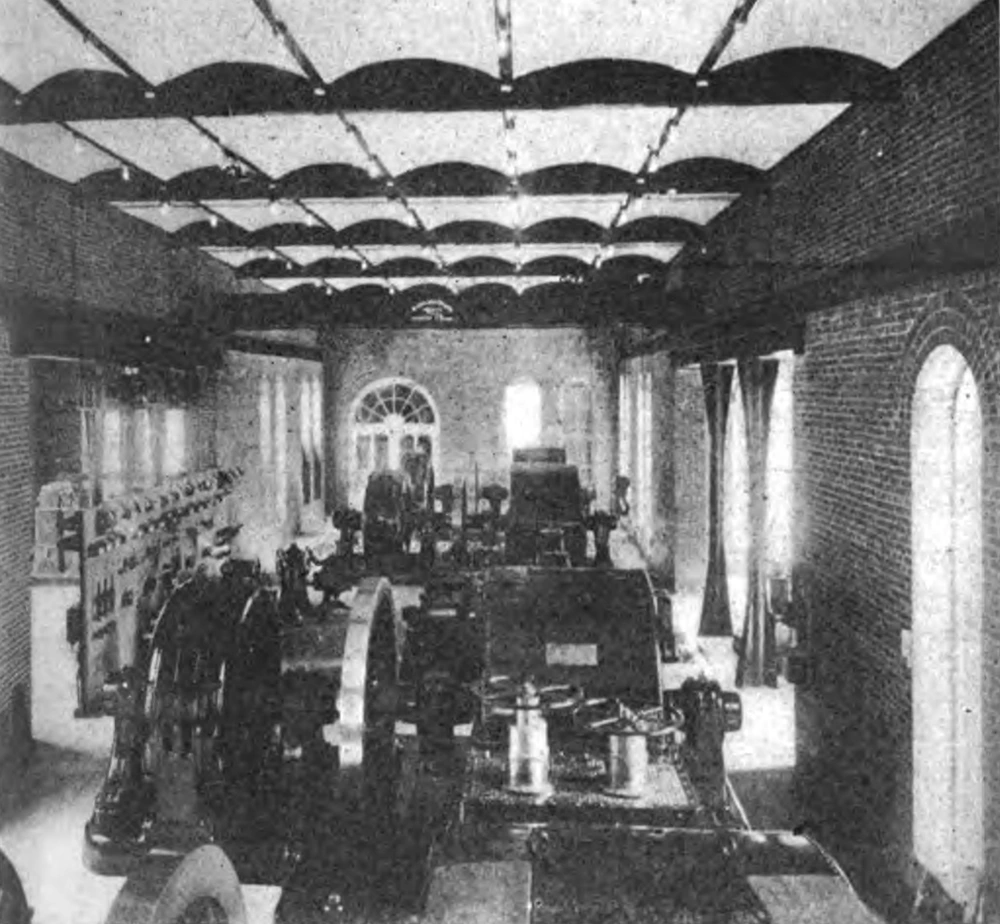
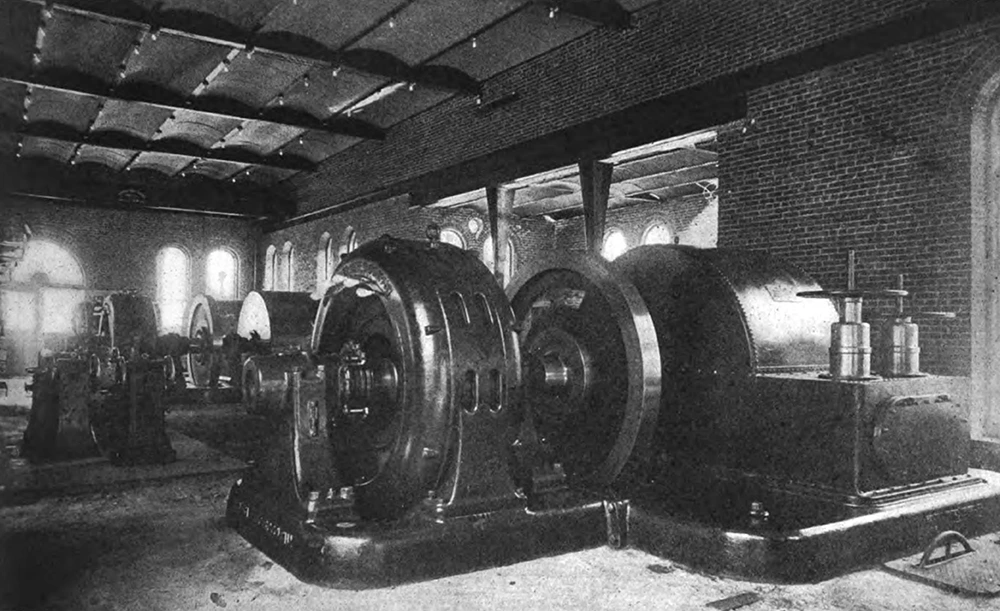
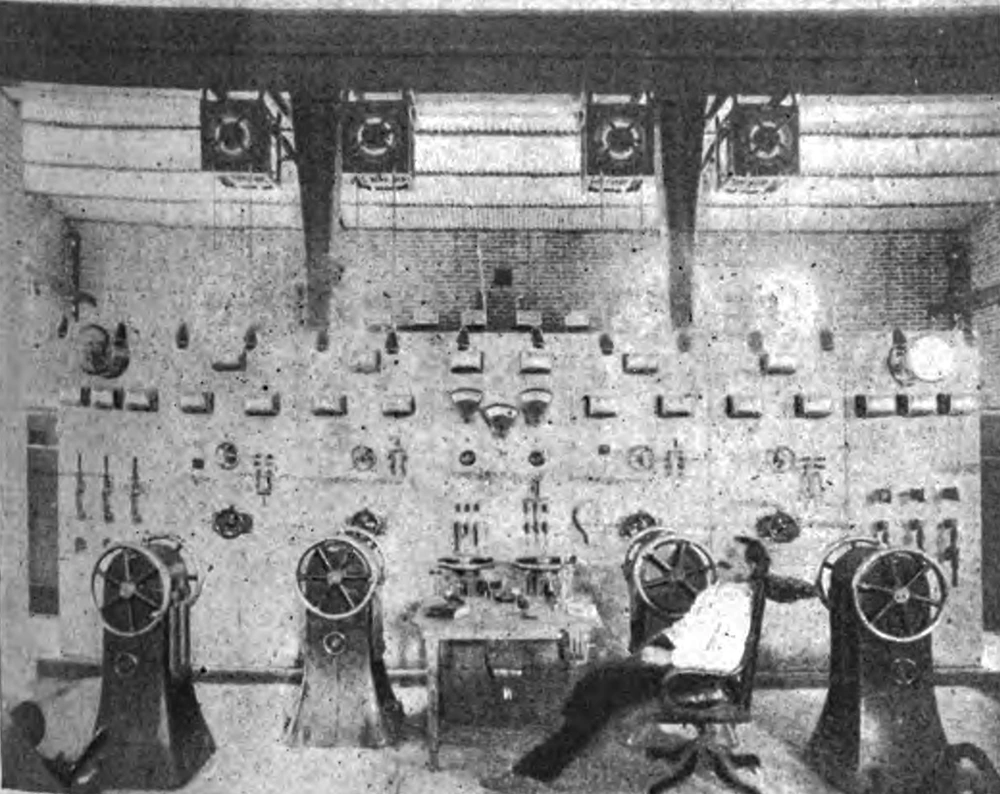
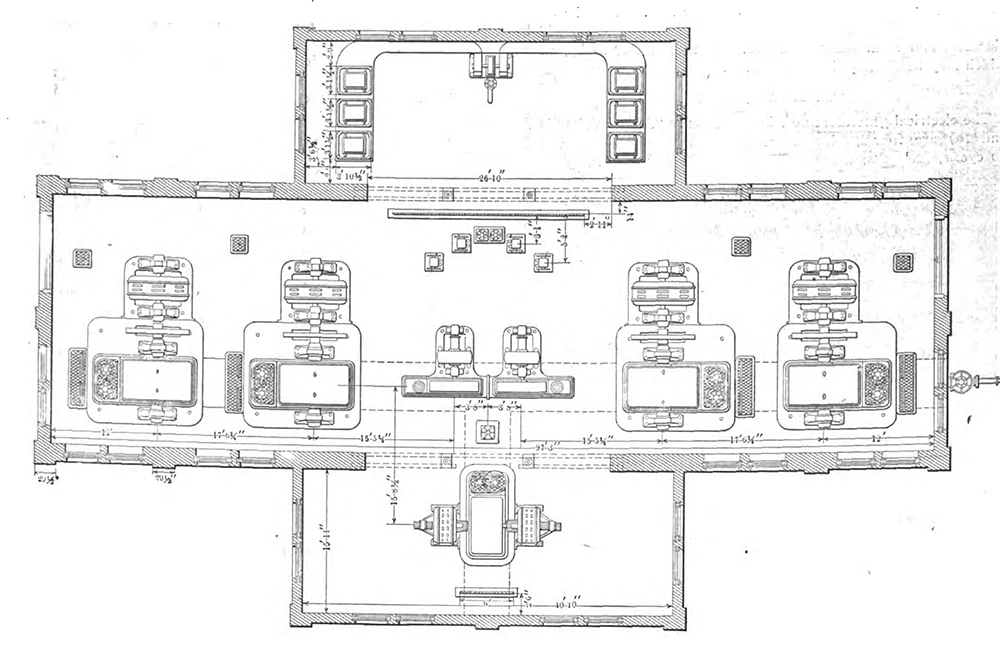

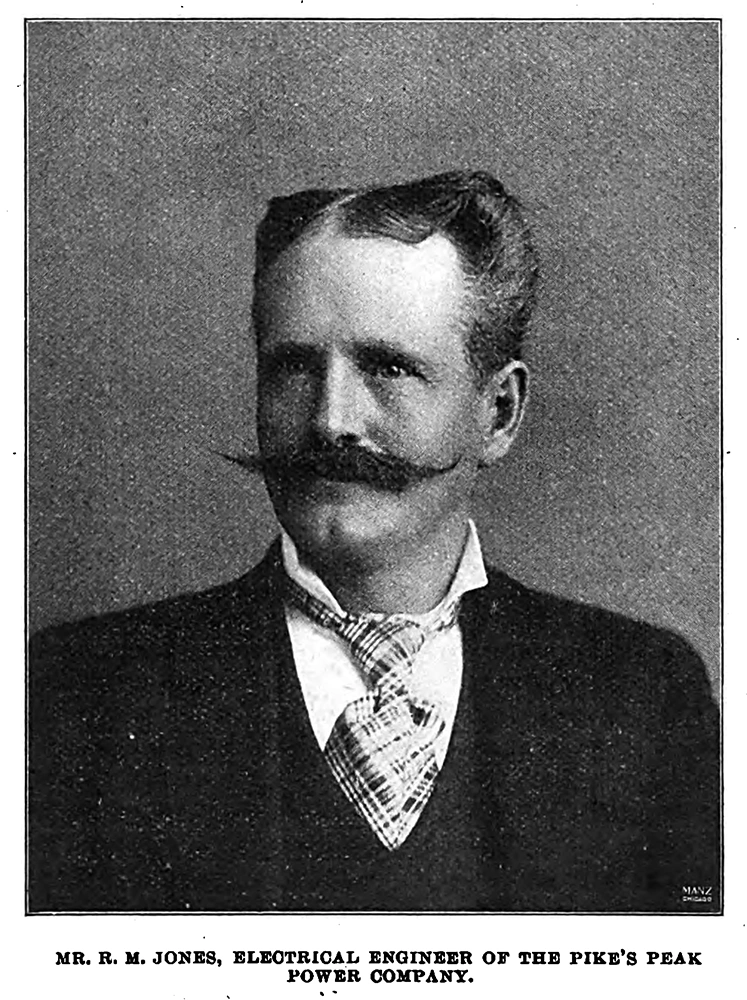
A Cautionary Tale of Professional Stupidity
This trip was a long time coming. It also nearly involved a search and rescue team, embarassment, regret and maybe even a little death here and there. Do not attempt to do this in one day like we did. We are experienced semi-professionals. But sometimes even the most semi-professional of adventurers make really dumb decisions. This is one of those times.
The Skaguay Power Plant has been on my bucket list for several years now and despite several trips to Colorado, I never could work it into the schedule/logistics of any prior trip. On this occasion I was on vacation with my wife when a good comrade showed up at the last minute, just in time to barely make this expedition possible. I had already done my research and some rough calculations and I was confident we could pull it off and now you know who to blame. I was therefore excited and looking forward to finally doing it. Soon, however, we would question whether or not we should have tried doing Skaguay on this trip and at one point we seriously questioned whether or not we were both going to make it back out on our own. And things only got worse from there. For the record: this is a true account of our experience.
The trail is listed as an 11.4 mile route with over 1,400 feet in elevation gain and considered difficult by any means. In reality this is an intense hike, even if you split it up into two days by camping out here, but it's an especially brutal grind if you are an idiot and attempt to do it out and back in one day like we did. Most reviews I've seen say that each direction takes about 5 hours. Having been on a relatively strenuous mountain hike only two days prior and now fully rested, I calculated our speed and estimated Skaguay would take us 3 hours per direction. Thus we naively thought we could knock this out in a day no problem. There's absolutely no cell service down here so you have no means of communication with anyone back at home/camp/etc so you'e truly all on your own in the wilderness. The trail is not officially established, meaning that there's no signage and often no well worn path to follow.. and the area also happens to be home to one of the largest concentrations of mountain lions in Colorado, so there's that.
We started the hike shortly after 10am on a very comfortable summer day, roughly an hour later than planned. We passed signs on the way that warned you to "plan for a two day trip" if you're going where we're going. But the thing about signs is they're just signs and promptly ignoring signs is all part of the job. If we're talking inner signs, or "gut insticts", that's just the other side of the same coin. If I listened to my gut instincts, I'd never do anything cool because every good adventure starts out with anxiety and a knotted gut and with experience you simply learn to completely ignore your "gut" (which admittedly sometimes leads me into really dumb situations most normal people would have avoided while smugly attributing it to the wisdom of their digestive tract and its feelings on the matter [ and ..yes.. I know. I can hear you sitting there saying "But your gut health is directly linked to your mental health blah blah blah". That's true, but you've gotten me way off track here with this unnecessary brackets-inside-of-parentheses-meta-bullshit, so just shut up and listen while I tell my story, ok?]). As I was saying, gut instincts are not trustworthy sources of information. To believe in their accuracy is to believe in the supernatural and psychic powers and ghosts and stuff. So anyway, the Skaguay expedition was to occur on our last full day in Colorado, followed by an early morning flight. My "gut instincts", or more accurately, my "logical assessment of the situation" told me that doing this huge ambitious trek at the last minute before an early flight could be problematic. But what is life if you're never pushing boundaries?
I had a camelback full of water and some food and all the usual gear crammed into a backpack which weighed me down tremendously. The hike started off quite as expected; The weather was perfect and the sound of the creek rolling along the rocks and the hills was soothing as we followed its winding course through the beautiful mountains. I was confident in our complete success. As we progressed, however, the trek became increasingly difficult. What started out as relatively flat, serene praries rolling along next to a calm and peaceful creek became boulder scrambles precariously situated above a raging river. The creek crossings I had read about were, in my imagination, something we would just roll up our pants legs for and walk across. And that's maybe what the first one was. But the remaining 5 or 6 (each way) were increasingly dangerous affairs as we fought against extremely strong currents and fridgid ice cold water that began to sting and numb your extremeties as you approached the other side, soaking your lower half entirely and leaving you cold and wet for the entire rest of the hike. And just as soon as you began to dry out and warm up, the next one is waiting. Each crossing ate up considerable time as we shed our packs to change shoes and redo our entire configurations on both sides of the "creek". I had read about some people making it most of the way before having to get wet and I can only assume the water level was either lower for them or it was unusually high on this trip. One thing is for certain; When we went, it was a heavy flow day.
At about 1pm, or according to the map roughly 3/4 of the way to the power plant, we were definitely feeling it. I had already put up my GoPro long ago so as to pay more attention to what I'm doing, where I place my feet and hands, etc. Around this time my comrade landed wrong on a step wrong and re-injured his bad ankle. We rested. And questioned whether or not the trip was over. Not wanting to bail after having gone this far already, he soaked his swelling appendage in the ice cold water and eventually he felt comfortable continuing. We stubbornly marched on toward the objective. He powered through the pain and even stuck a collapsed water bottle in his boot so as to apply pressure to the injury. I'm not sure how it helped, but it seemed to for a while at least. We took it slow and steady. Success was still a possibility but we also still had a grueling hike through challenging terrain ahead of us and then everything all over again on the way back. Just as we'd start to dry off a little, the next crossing would sneak up like a punch to the gut knocking us off our rhythm and slowing the pace considerably. The trail was, at the time of our expedition, at best moderately marked off in some areas and not marked at all in others. For the most part you can tell where you need to go but it kept us guessing often enough so as to send us down many dead ends through taller vegetation only to force us to backtrack and waste precious time and energy in the process.
Finally at 3pm (now 5 hours into the expedition) we stumbled up the trail leading away from the creek directly to the plant itself. We were fucking exhausted and we were both now out of drinking water. My comrade was really not doing so good by this point but we were so far in there was nothing to do but keep on keeping on. We've done terrible gruelling shit before and yeah this trip was already ranking among the worst. I rushed around as fast as possible to check out the plant knowing that we were going to be pushing right up against nightfall on our way back. And doing this hike in the dark sounded like the worst possible outcome. It wasn't yet 4pm by the time we were back on the trail. I had planned to spend a good amount of time onsite resting while taking in the amazing scenery and experience knowing that I may never see it again but as late as it was we needed to move quickly so I didn't so much as sit down to catch my breath except to shove food down my throat. I later learned that my comrade was so dehydrated and exhausted that he couldn't even keep his down.
And this is the point where things went from bad to worse. With time running out, both of us out of water and us being about ~5 miles deep in the mountain wilderness and with no means of communication with the outside world, my comrade very soon began experiencing serious uncontrollable muscle cramps and wild spasms which immediately sent him to the ground. Each occurrence set us back that much later as we waited out the waves of horrible pain. His leg muscles were doing things I've never seen leg muscles do before; they were undulating and rippling like waves beneath his skin. We began considering, eventually openly discussing, contingency plans such as me taking his keys and going back to town to find help to get him out. While I was holding together ok I was definitely not in any shape at this point to be carrying him out over the boulders and through the water. The fact that I was scheduled to leave Colorado very early the following morning weighed on my mind. Furthermore, I had left my rental and hitched a ride with him the ~2 hours down to the reservoir so I couldn't have left him there even if I wanted to. Not to mention the fact that there were very likely bears/mountain lions/etc in the area. Everything was falling apart. I cursed myself for allowing this to go so far and for things going so wrong.
Despite all this, I tried to make sure we remained positive. Sure I had to leave early in the morning but sleep isn't really a "necessity" when you get down to it. We just had to take it one step at a time and eventually we probably had a decent chance of making it out alright even if we had to crawl. It didn't help that the trail was so poorly marked that we encountered several dead ends forcing us to back-track several more times. We slowly crept onward, still fairly confident in an overall good outcome.
And this is the point where things went from worse to worse-er. As the sun lowered in the sky, the shadows of the mountains on our left rose up the sheer rock face of the mountains on the right before finally completely topping them and dissolving the faint signs of the trail into the murkiness of the night. We were still only about halfway back. The temperature also plummetted and each creek crossing was more and more unpleasant than it was in the warm sun and daylight. As darkness enveloped the land and encouraged nature to transition to its nocturnal state, we began to see lightning in the distance. Things were looking really fucking not good. There was now a real possibility that we were now going to be stuck deep in this valley in the dark with a comrade who could barely walk and a creek that was already loud, powerful and dangerous to cross with a fucking rainstorm on top of it making conditions significantly worse in all respects considering it would mean even colder temperatures, deeper/stronger currents and slippery boulders. It seemed as though our situation was turning out to be as shitty and dangerous of an experience possible, as far as what Beaver Creek Wilderness Study Area could throw at us anyway; This is an area that is prone to powerful floods and avalanches that flush away anything dumb enough to be in its path and there we were.
It was now completely dark and the waxing moon in the part of the sky that wasn't yet overtaken by clouds was still only a sliver of light and therefore provided no illumination except to differntiate the dark blue of the sky from the now-shorouded-in-black featureless mountains and the landscape we had to navigate below. My bright headlamp was incredibly harsh against the pure black of the night and even with this light it was difficult to identify whether we were on a trail at any given point or if we were just bushwacking in the weeds. We still had a ways to go and having lost count I desperately hoped that, now that it was completely dark, the water crossings were all behind us and that the rain would hold off. Finally the ground levelled out and the creek did the same. We only barely succeeded in getting past the worst of the crossings before total darkness but still had several left to go. Simply walking on the relatively flat ground, even without the rain which now seemed imminent, each step forward required every last bit of strength we had left as we dragged our ragged and exhausted shells of our former selves onward. We were no longer racing (albeit very slowly) against the dark. We already lost that battle. We were now racing against the increasingly near and frequent lightning and the black clouds which by this time had extinguished half of the stars in the sky and with it the last of the visible natural features the night offered us. I began to perceive scents that I was unfamiliar with but which smelled like a musky animal. And I would occasionally see pairs of eyes on the trail ahead reflecting my light but I couldn't see well enough to determine what sort of creature the eyes belonged to. I kept checking GPS and we were walking exactly as slowly as it felt like we were. Time dragged and we dragged along with it. All the while the very real dangers that we faced seemed only to accumulate.
We finally turned the last corner of the path and were greeted by the artificial light of civilization. Fairly surprised to not be washed away under what I imagined was the soon-to-be "Flood of 2021" (in which only us two idiots managed to die by being washed away forever down Beaver Creek), we got back to the parking lot at the reservoir at 11pm, just over ~12 hours after we began the trip and a full 5 hours past the time I had agreed to check in with my people who were now extremely concerned for our well-being. So concerned, in fact, that they called it in and had someone out to check on us. Back at the hotel, they had tried to be ok with us being so late but the storm convinced them that things were perhaps not going to be ok.
As we were getting in the truck, a 6 pack of beer fell out onto the parking lot. Several of the bottles began spraying everywhere and covered me in beer. "Perfect end to the trip", I thought. As we headed out of the parking lot, we had to navigate around a truck that had just pulled in with an obnoxious light bar blinding us. And then the lights turned red and blue because it was a cop. And that was naturally awesome since I was covered in beer and, according to other signs that were posted, there was no overnight camping allowed (which must be a new thing because I've actually camped there before). "An even more perfect end to the trip" I now thought and figured we'd be delayed and harassed. The cop asks us if we're Sublunar Johnson and Microwave and we reply in the affirmative (this is when I realized my wife was going to kill me). He tells us that he was sent to look for us and had we not been in the truck when he arrived he would have called in the search and rescue team. He told us that he was surprised we made it all the way there and back in a day and at this point, so were we.
It was now 1am before I finally got to lay down in bed back at the hotel and if I fell asleep immediately, I'd only get a maximum 3 hours sleep before the 4am alarm clocks would ruin my day and force me onto the next phase of this brutal expedition which consisted of a very rushed, sore and miserably exhausted departure from the mystical lands of Colorado. Now back home in Saint Louis and nearer to sea level, I am about as sore as I've ever been while typing out this dumbass report of our dumbass trip to the Skaguay Power Plant. Now I keep myself in generally good shape so as to always be prepared for things like this and I exercise just about every day but this experience absolutely kicked my ass. Colorado doesn't fuck around. I'm immensely glad that I finally got to check this one off the list and I couldn't be happier that it's all behind me now and that we made it back without any serious issues.
Whatever you do, don't underestimate the Skaguay Power Plant and the Colorado wilderness that separates you from it. We did it in one day proving only that we are dumb. But we also proved to ourselves that we are perhaps too dumb to be stopped. Or something. This wasn't our first rodeo and I don't expect it to be our last but it was definitely the most grueling yet.
At the very end of this post is the one picture I took along the trail on the way out as the last shred of daylight faded away. I did have a gopro running for the first ~1/2 of the hike so I'll have some footage of the easier parts of the trail included in the video, but I gave up recording eventually because of how hard the going was getting. I wish I had thought to turn it on for the night time portion of the trip, but I was preoccupied by trying to make it back alive.

































This was one of many stops along the creek where we rested. At about the halfway point, the daylight was nearly gone and we still had a long way to go before the end. It was the only point on the return trip that I bothered with a camera at all because I was too exhausted to otherwise care.
